Folx
At Galleri Nicolai Wallner, Copenhagen, DK
20.08.2021 - 30.10.2021
Galleri Nicolai Wallner is pleased to present Folx – our first solo exhibition with Rasmus Myrup.
Bringing together elements from our natural and social histories, Rasmus Myrup’s practice puts forward parallel narratives of what once was and what continues to be. Love, sex, and power are brought into focus, tying together the worlds of flora, fauna and people alike.
Myrup’s installations, sculptures and works on paper reintroduce us to a world which is subversively ours but can be overtly ours if we so choose. This drive to bring other narratives to the forefront is echoed in Myrup’s technical prowess, which utilises both traditional practices and modern techniques to create something which feels uniquely in the here and now.
This dynamic world is brought to life within the context of Folx. Under this newfangled, more inclusive spelling of the earthy, traditional word “folks”, sculptures in the form of figures from Danish folklore, Scandinavian stories and Norse mythology inhabit the exhibition space. Just as in their respective tales—some known, some forgotten—each figure feels both human and other at the same time.
Echoing this duplicity, each backstory is both incredibly detailed and vague, referring to an abundance of tales both contradictory and similar. Iconic elements from these stories are incorporated by Myrup into the sculptures, with natural elements often sourced by Myrup from the places where the stories take place. Oysters from Limfjorden make up the face of the mother whose child created the fjord, rye and bread make the body of The Rye Bitch [Rugkællingen], and soil from where Gefion is purported to have lived make up her face, body and the mud on her skirt.
Fabricated or supposed differences between nature and culture are done away with, as these figures often give explanations for how our world was physically created while their stories invoke cultural traditions which live long past our knowledge of why and how they came into being. These folx might represent a wild and untamed nature that opposes any organized society, but they are in fact pure creations of human culture.
Click here to see more on the gallery's website
All documentation by Anders Sune Berg
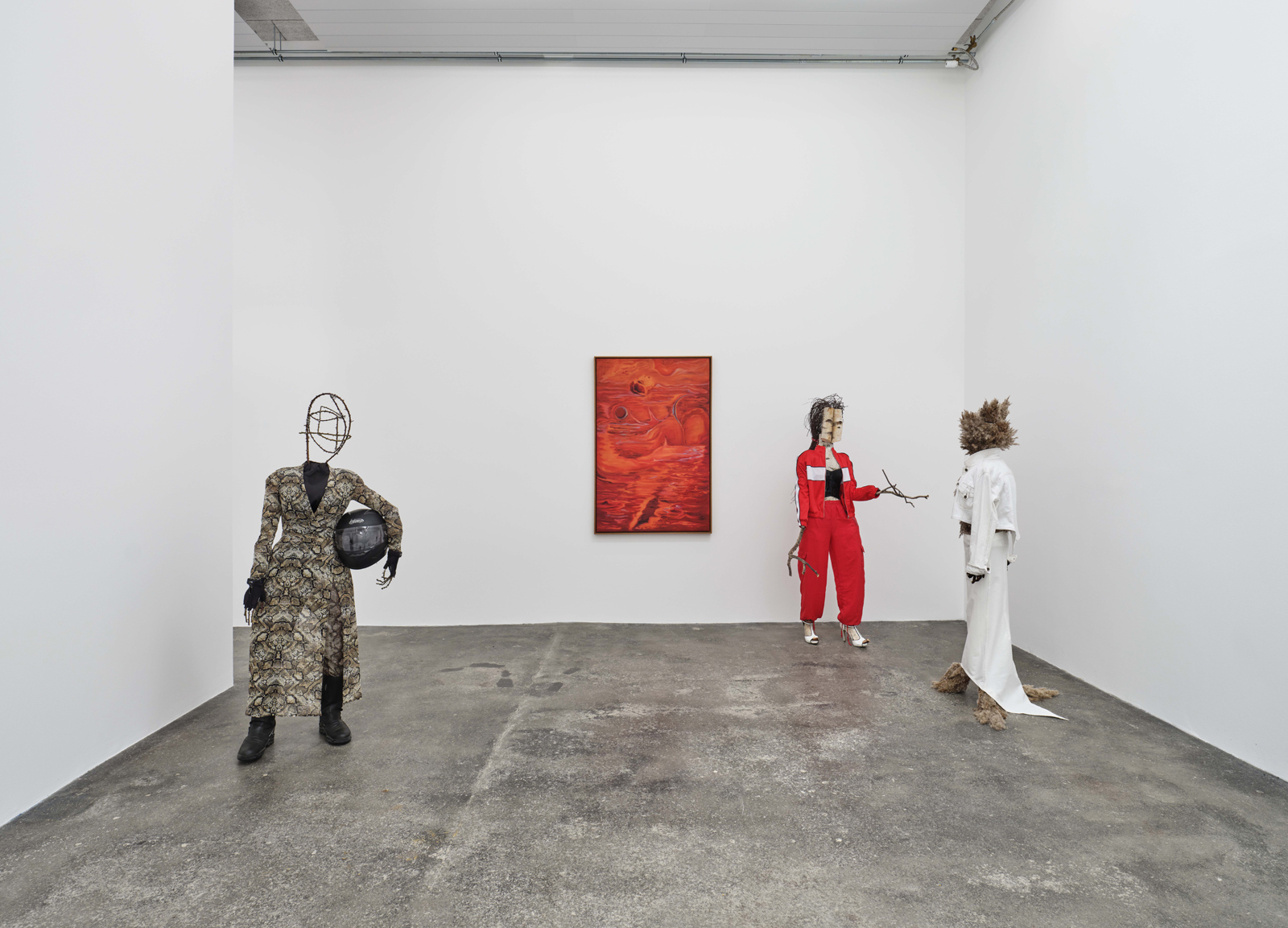
Folx, 2021
Installation view
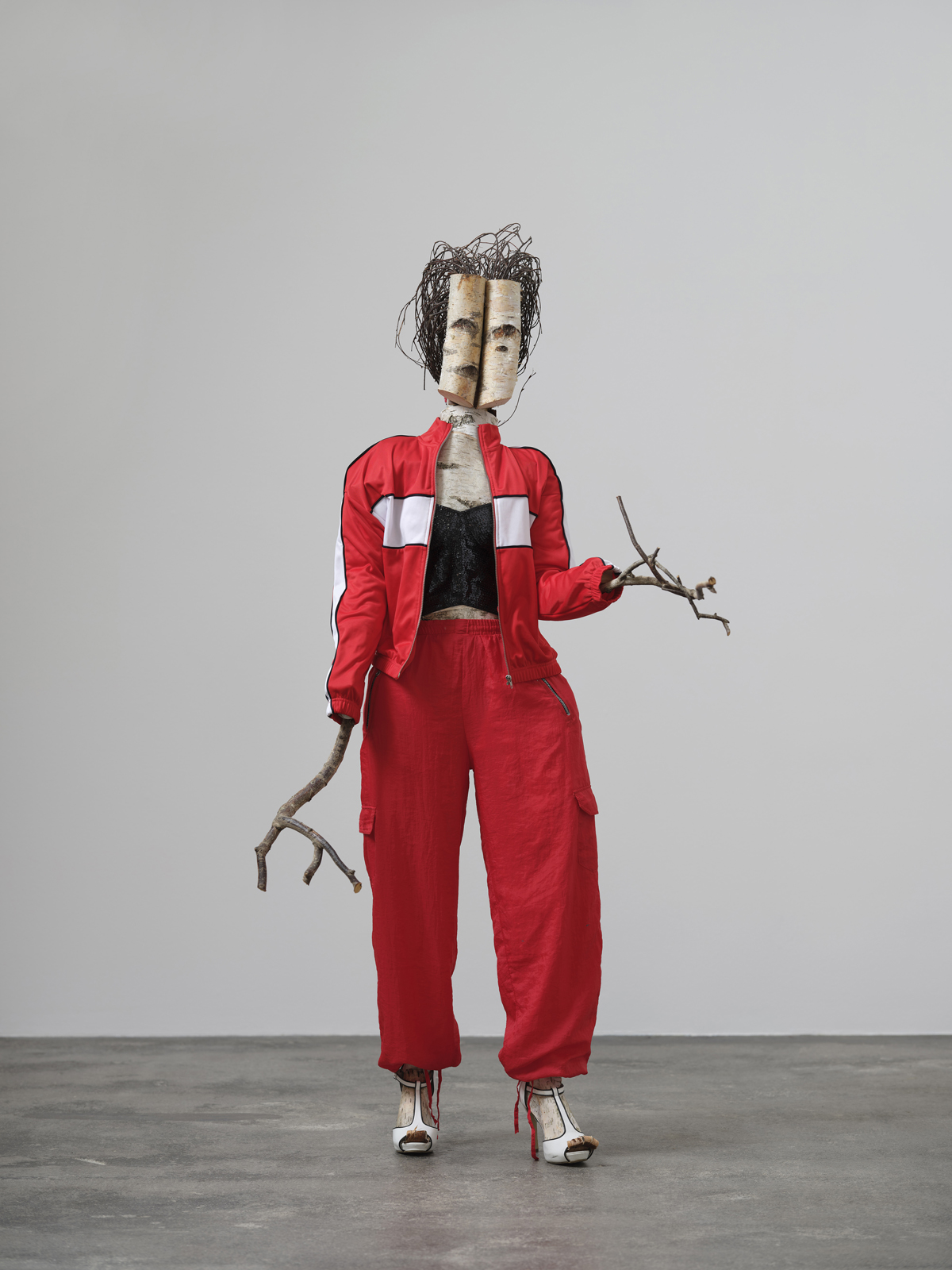
Mother Grib, 2021
Birch wood, birch twigs, birch bark, birch branches, track suit, high heeled shoe, upholstery foam, plastic, wood, hardware
188 x 97 x 106 cm
She used to be somewhat of a celebrity when she was on “Real Housewives of Hills”. Eventually people couldn’t handle Mother Grib’s mix of motherhood and sexuality. Slutty Soil they called her… Humans can be so hot and cold. They build you up and name an impressive forest after you, only to tear you down and call your children bandits...
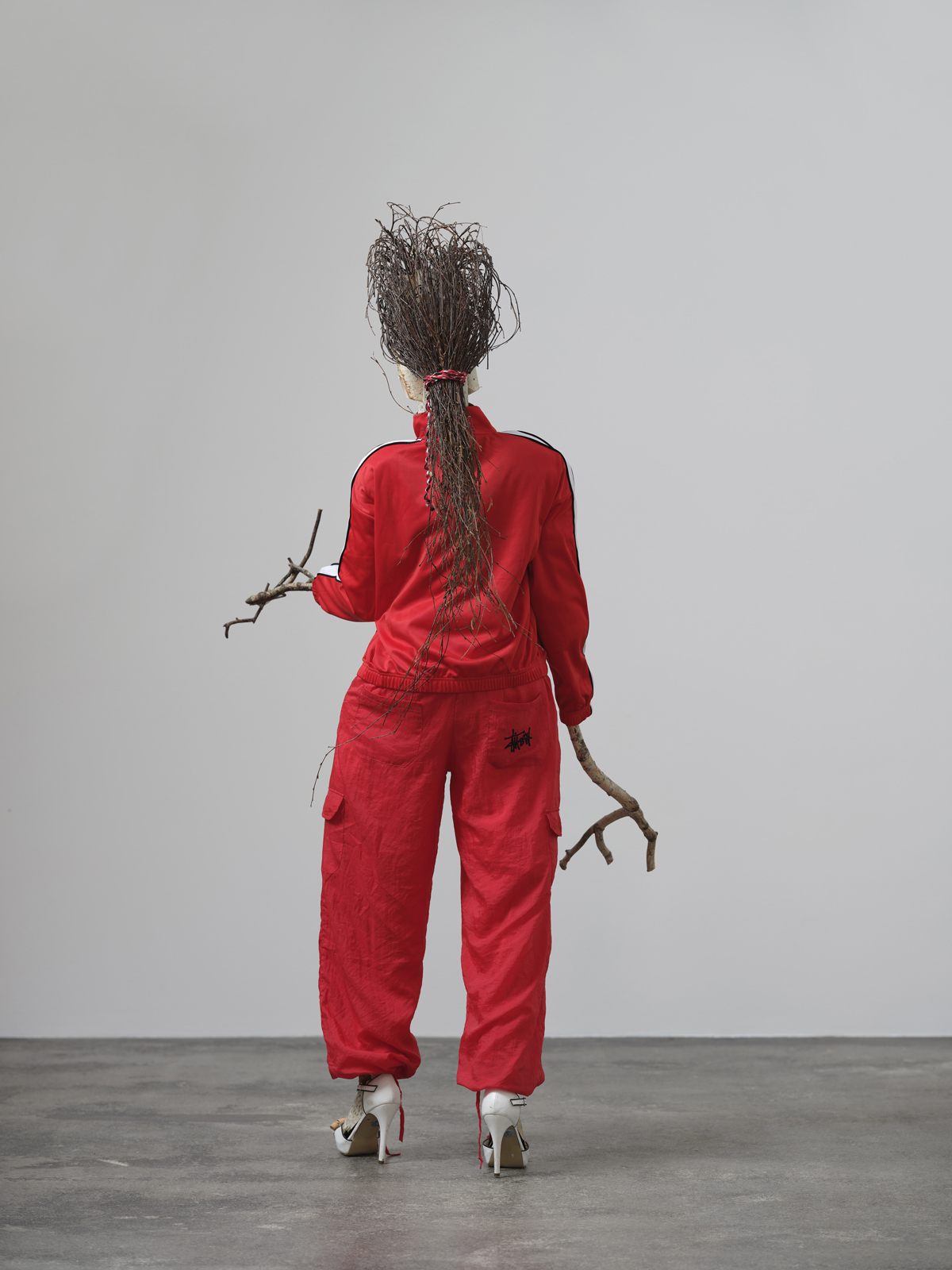
Mother Grib, 2021
Birch wood, birch twigs, birch bark, birch branches, track suit, high heeled shoe, upholstery foam, plastic, wood, hardware
188 x 97 x 106 cm
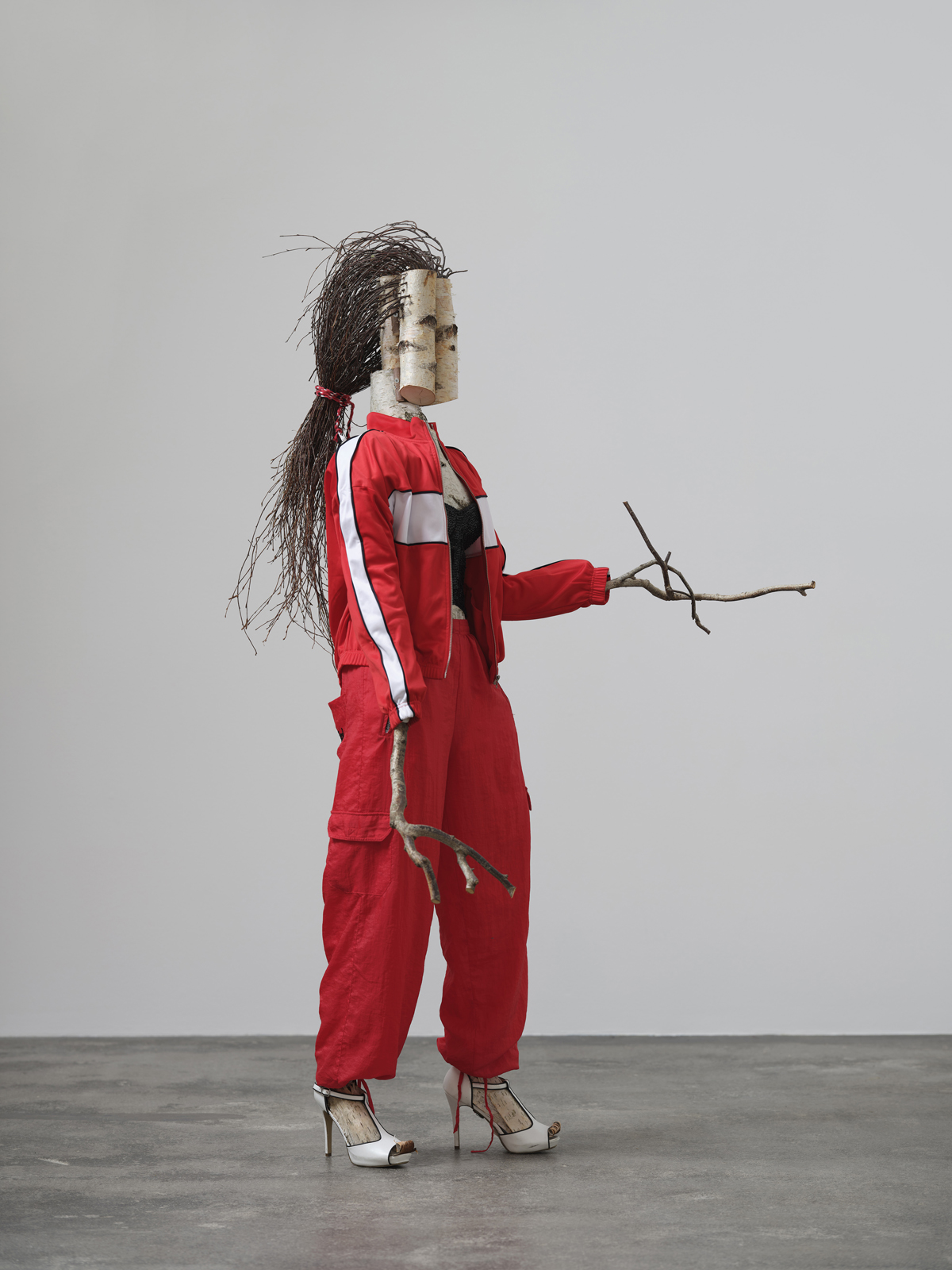
Mother Grib, 2021
Birch wood, birch twigs, birch bark, birch branches, track suit, high heeled shoe, upholstery foam, plastic, wood, hardware
188 x 97 x 106 cm

Virgin Poop [Jomfru Bæ], 2021
Reed flowers, cattails, mannequin, jacket, skirt, glasses, necklace, ring, copper wire
167 x 90 x 50 cm
Virgin Poop has been accused of killing a guy, merely because he was boasting, and she supposedly “couldn’t stand bragging”. In fact the boasting bastard had threatened her with a beating after she confronted him right outside her bog, before falling over dead – drunk out of his mind. She might seem tough, but underneath her reeds beats a broken heart ready to be mended.
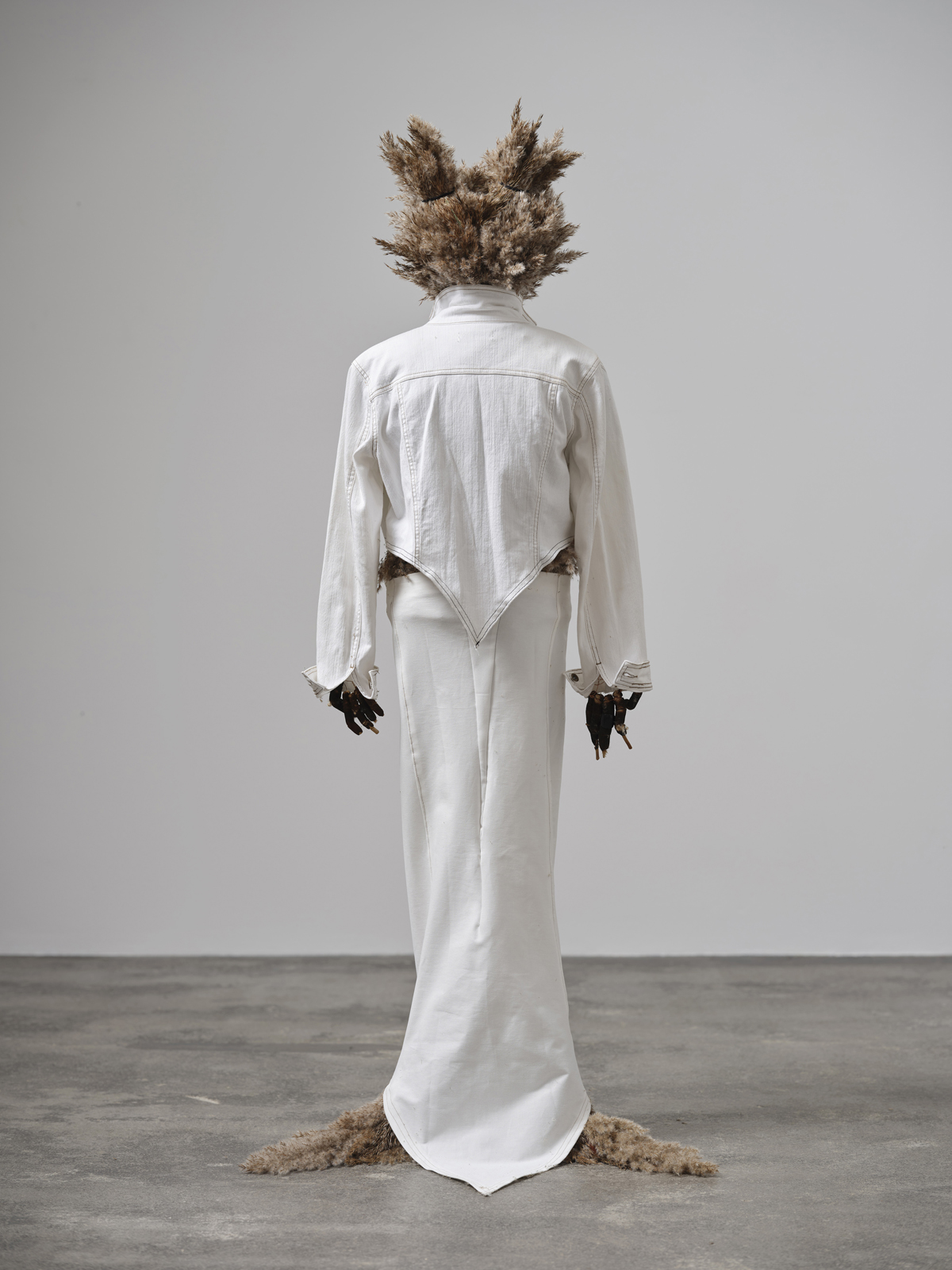
Virgin Poop [Jomfru Bæ], 2021
Reed flowers, cattails, mannequin, jacket, skirt, glasses, necklace, ring, copper wire
167 x 90 x 50 cm
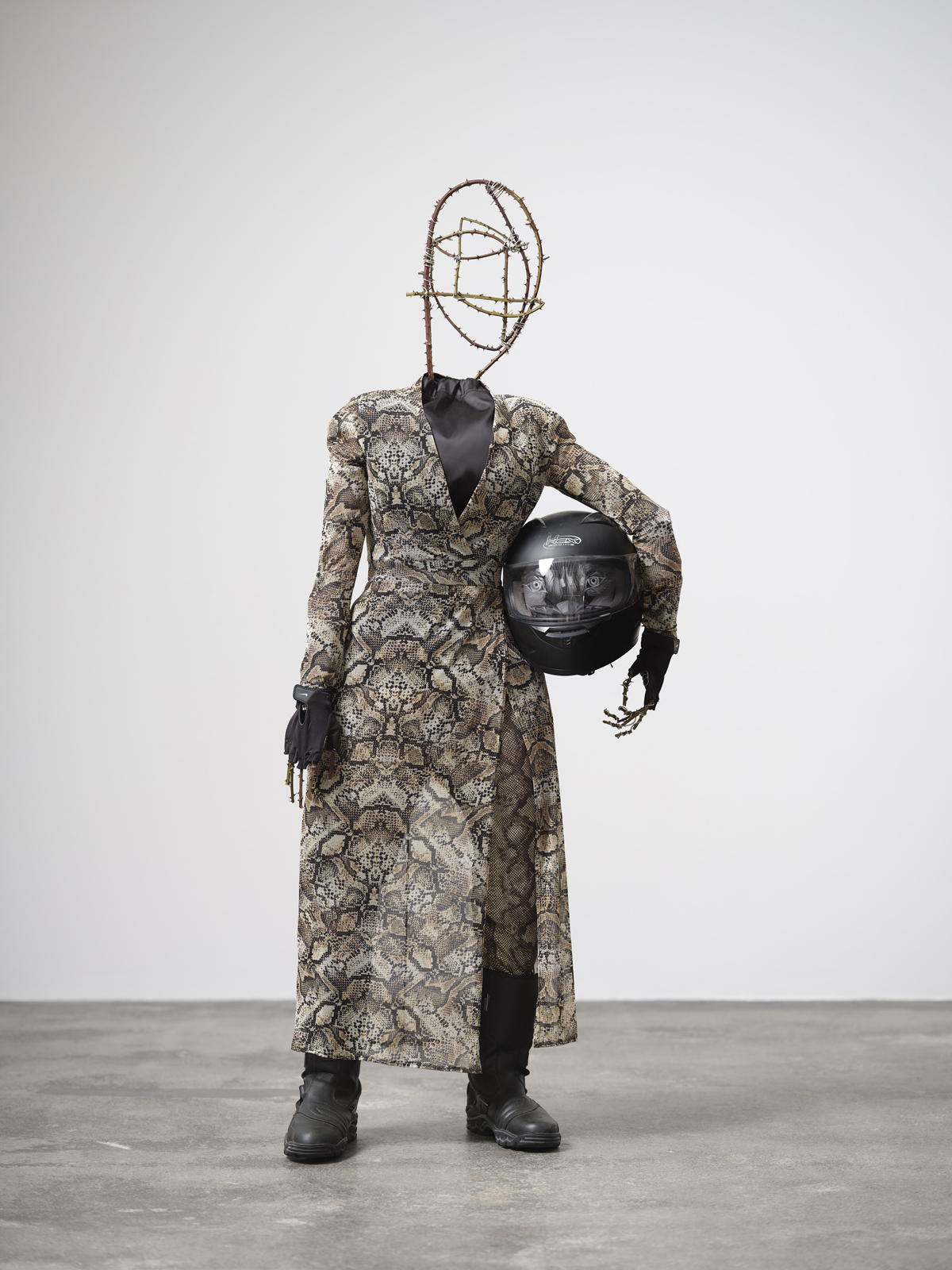
Hyrrokkin, 2021
Blackberry vines, aluminium wire, snake print dress, imitated snake pants, motorcycle boots, engraved motorcycle helmet, finger gloves, fabric, wood, upholstery foam, plastic, hardware
178 x 72 x 30 cm
Hyrrokkin, simply did what had to be done. Did what she was asked to do. After riding in on her wolf, with a snake for a handle, she forced Baldur’s death ship from the shore. The blundering Thor wanted to “bash in her skull”, to use his own words. She did however make the most of that moment, somehow. You never see her without some sort of wolf and snake combo. I guess that’s also why she was called upon to drive the wolves out of Vendsyssel too… She’s just synonymous with snake-aided-wolfriding now...
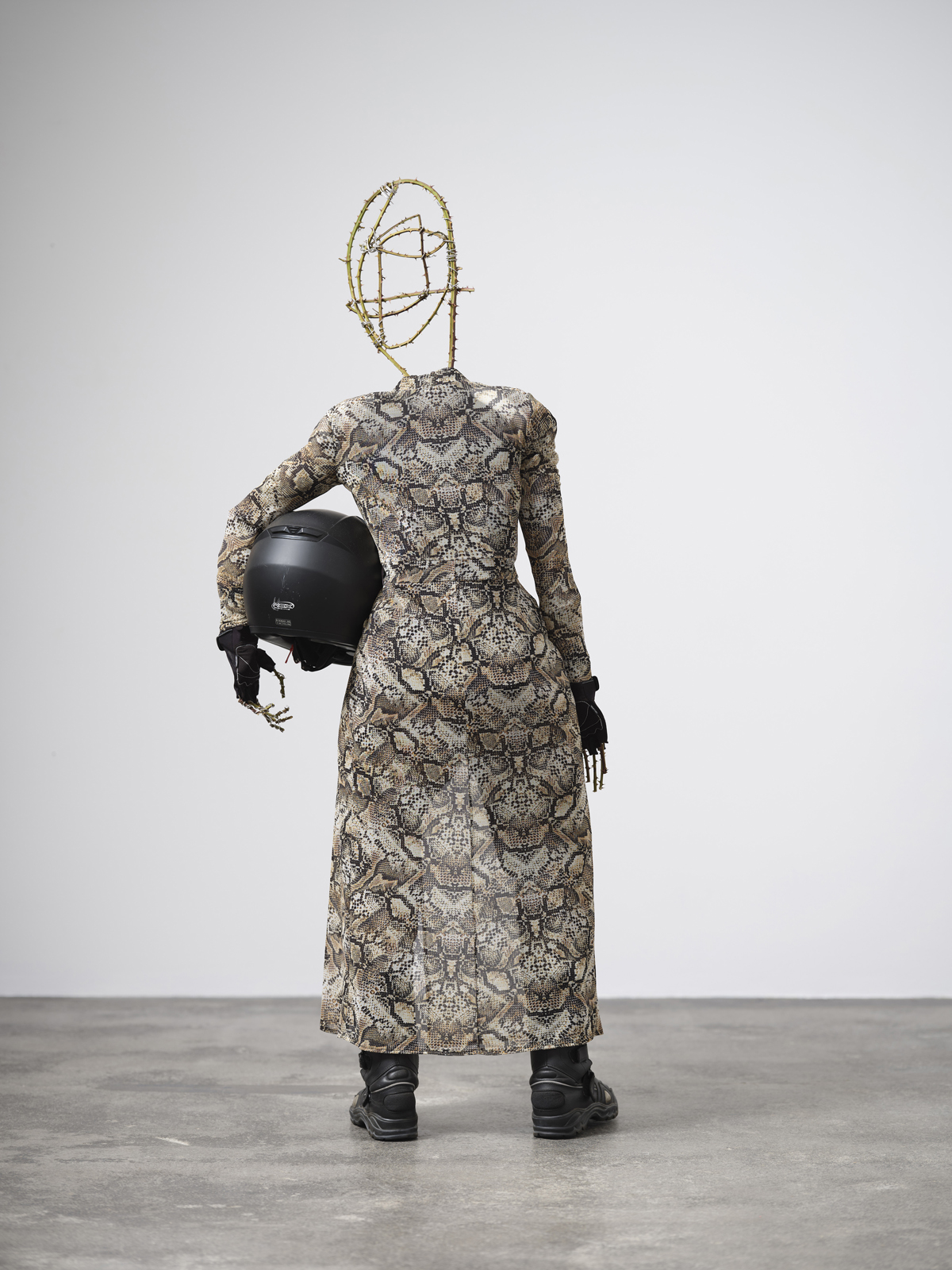
Hyrrokkin, 2021
Blackberry vines, aluminium wire, snake print dress, imitated snake pants, motorcycle boots, engraved motorcycle helmet, finger gloves, fabric, wood, upholstery foam, plastic, hardware
178 x 72 x 30 cm
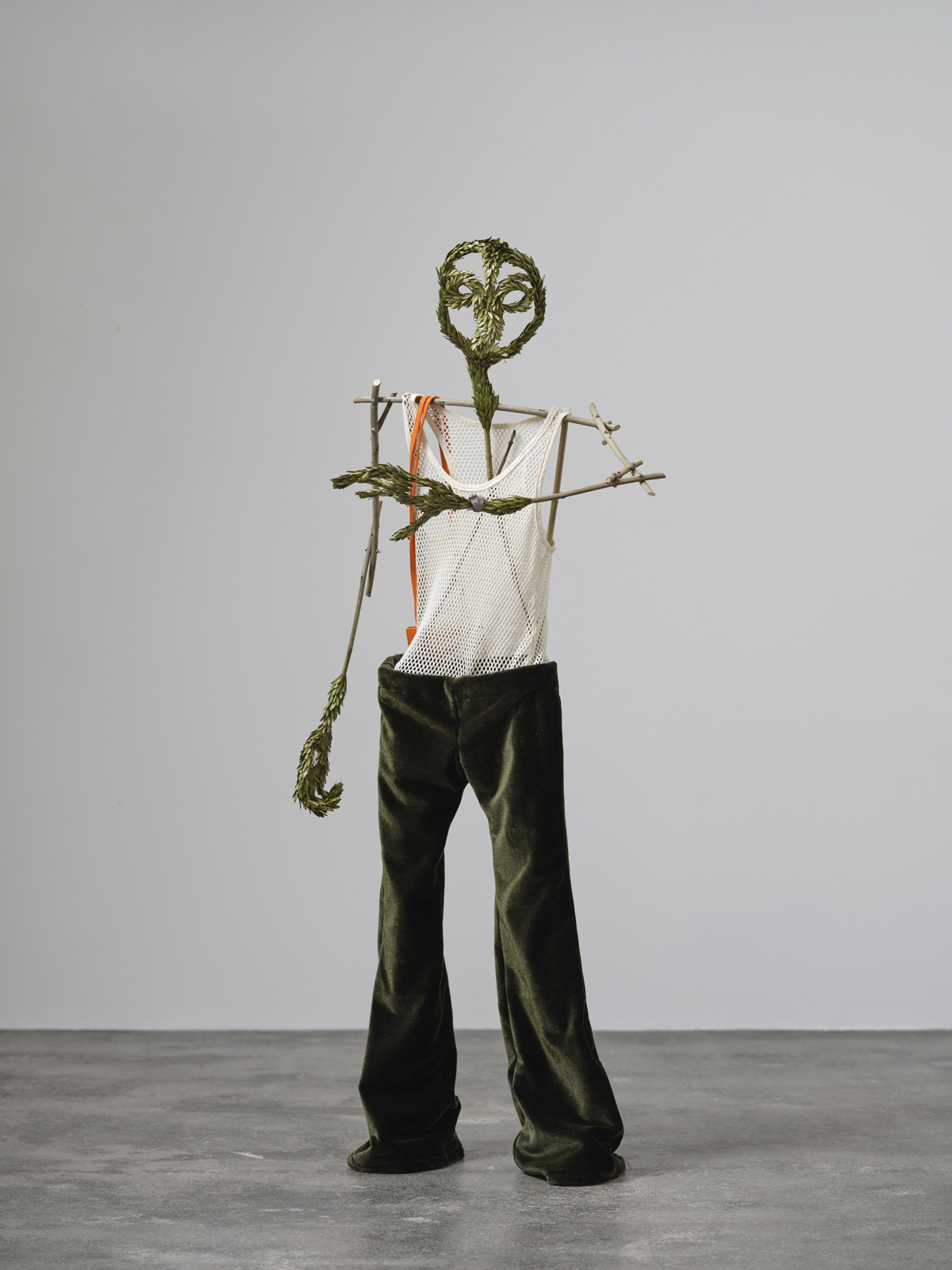
Skuld, 2021
Ash seeds, ash sticks, wrist watch, nettet tank-top, imitated green sealskin pants, bag, aluminium wire, vinyl tape, wood, hardware
Skuld, is waiting for the other norns to arrive. She’s always a little early… Verdande and Urd should be here soon, though. The present and the past always catch up to the future eventually...
180 x 97 x 62 cm
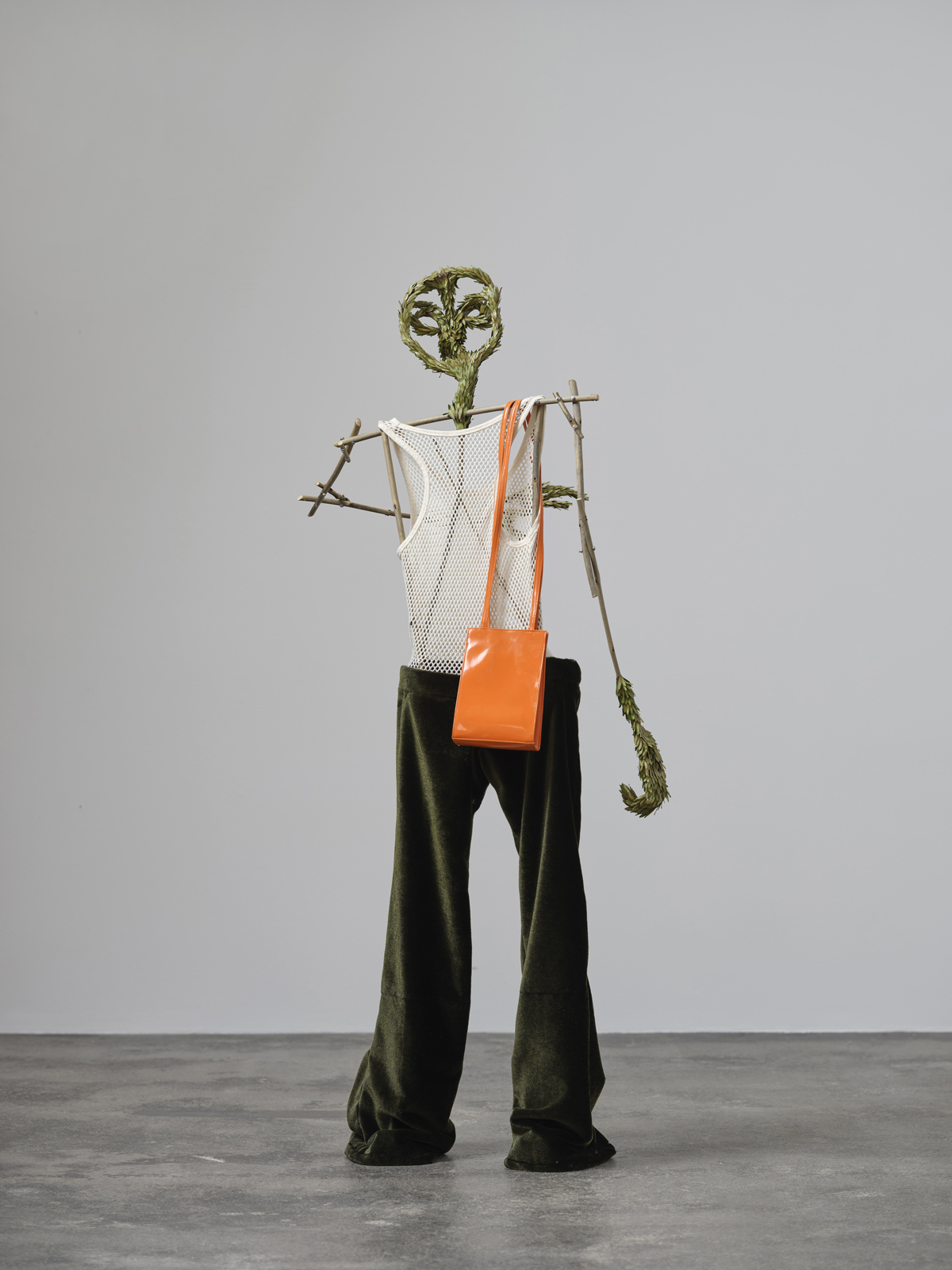
Skuld, 2021
Ash seeds, ash sticks, wrist watch, nettet tank-top, imitated green sealskin pants, bag, aluminium wire, vinyl tape, wood, hardware
180 x 97 x 62 cm
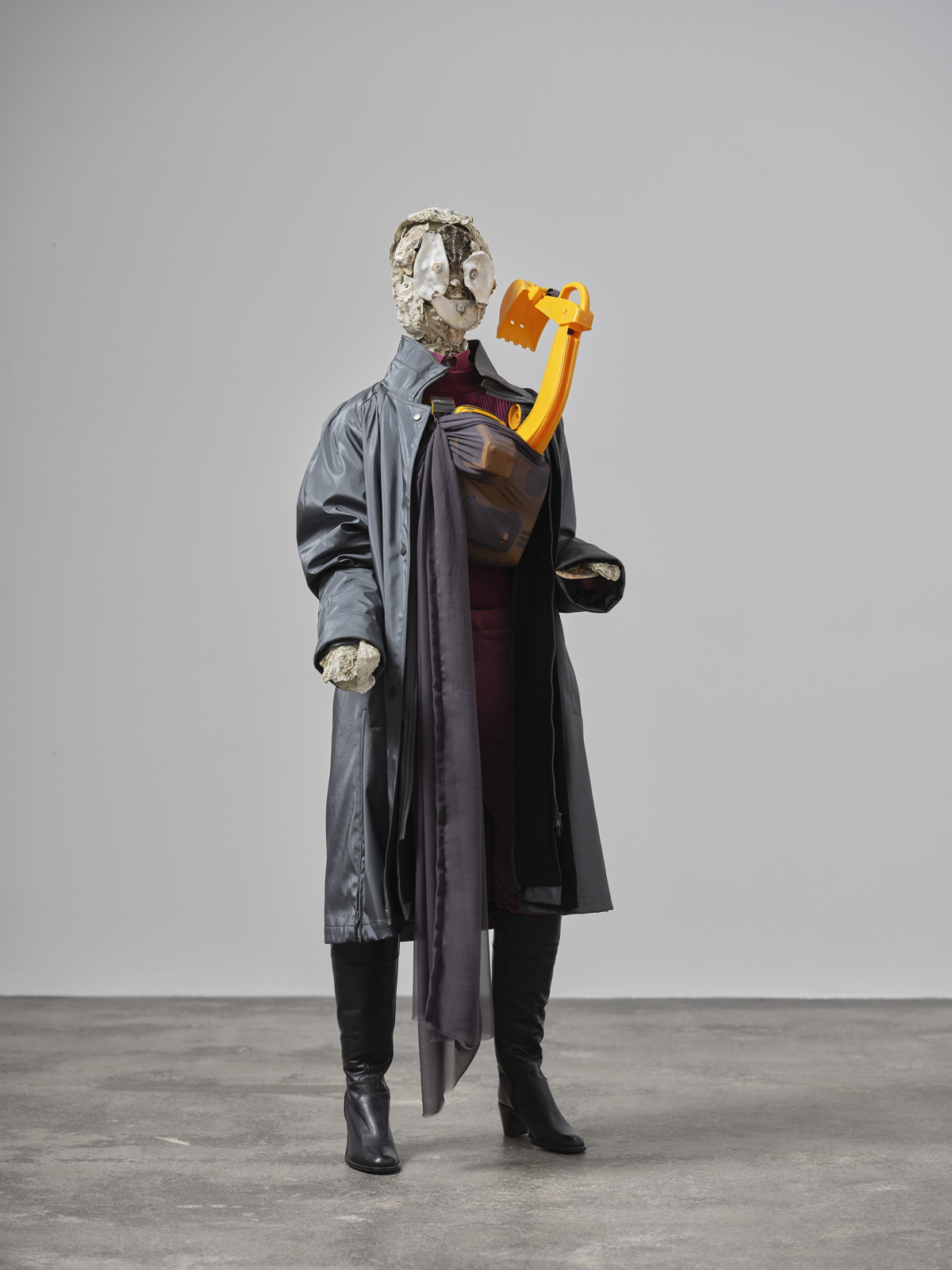
Limgrim and Her Mother, 2021
Oyster shells from Limfjorden, modded toy excavator, silk baby ring sling, embroidered jacket, t-shirt, sweater, pants, boots, upholstery foam, plastic, wood, hardware
169 x 65 x 50 cm
Limgrim’s mother was so tired of listening to everyone babble on about little baby Jesus that she got herself a little piglet daughter that would – in her words – become bigger than Jesus. One day your girl is just a cute lil’ piglet, nuzzled in the ring sling on your chest, and the next she’s a giant sow, bigger than the tallest oak in Northern Jutland, digging a channel and turning the tip of the peninsula into an island in the process. They grow up so fast…
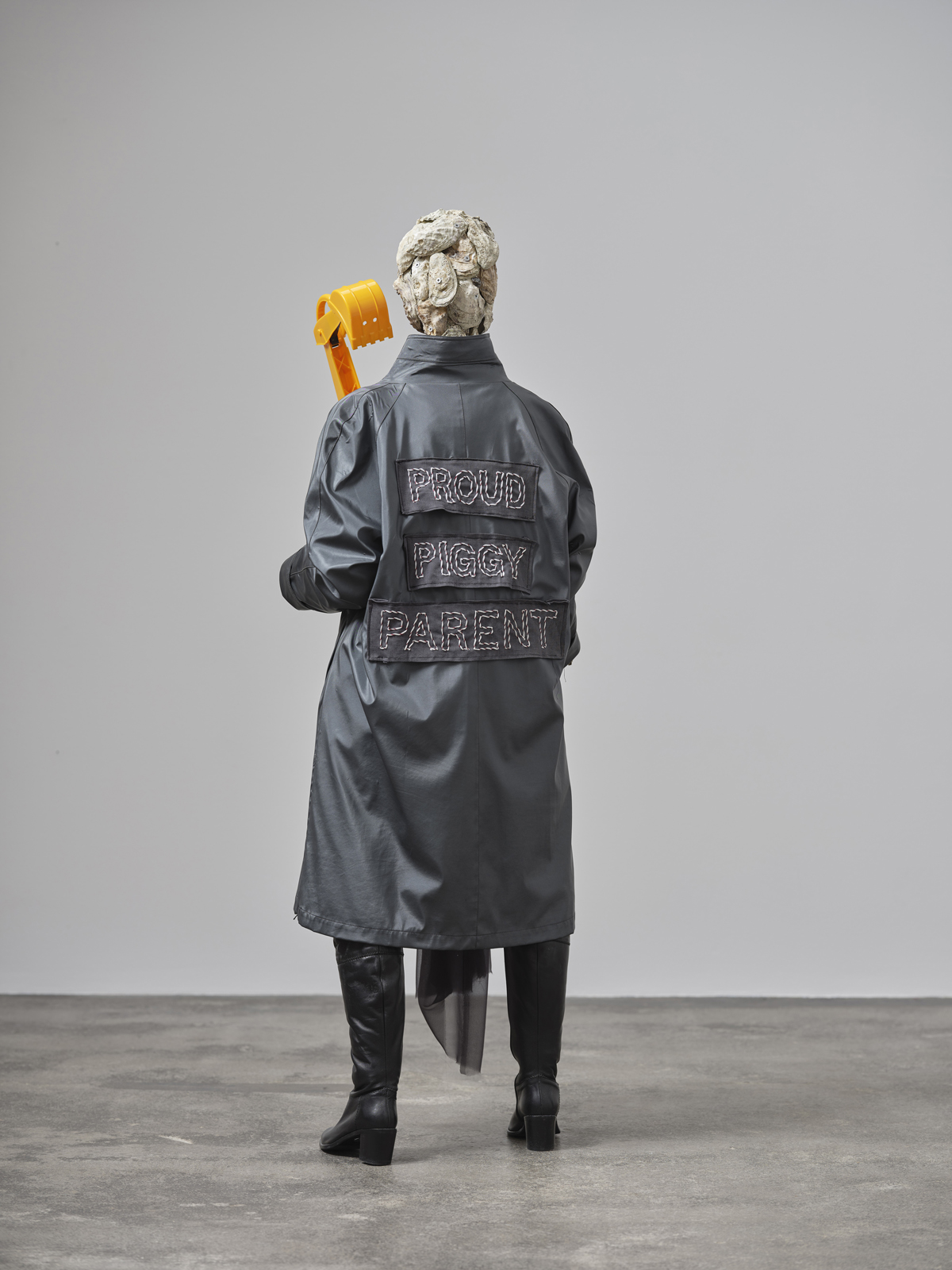
Limgrim and Her Mother, 2021
Oyster shells from Limfjorden, modded toy excavator, silk baby ring sling, embroidered jacket, t-shirt, sweater, pants, boots, upholstery foam, plastic, wood, hardware
169 x 65 x 50 cm
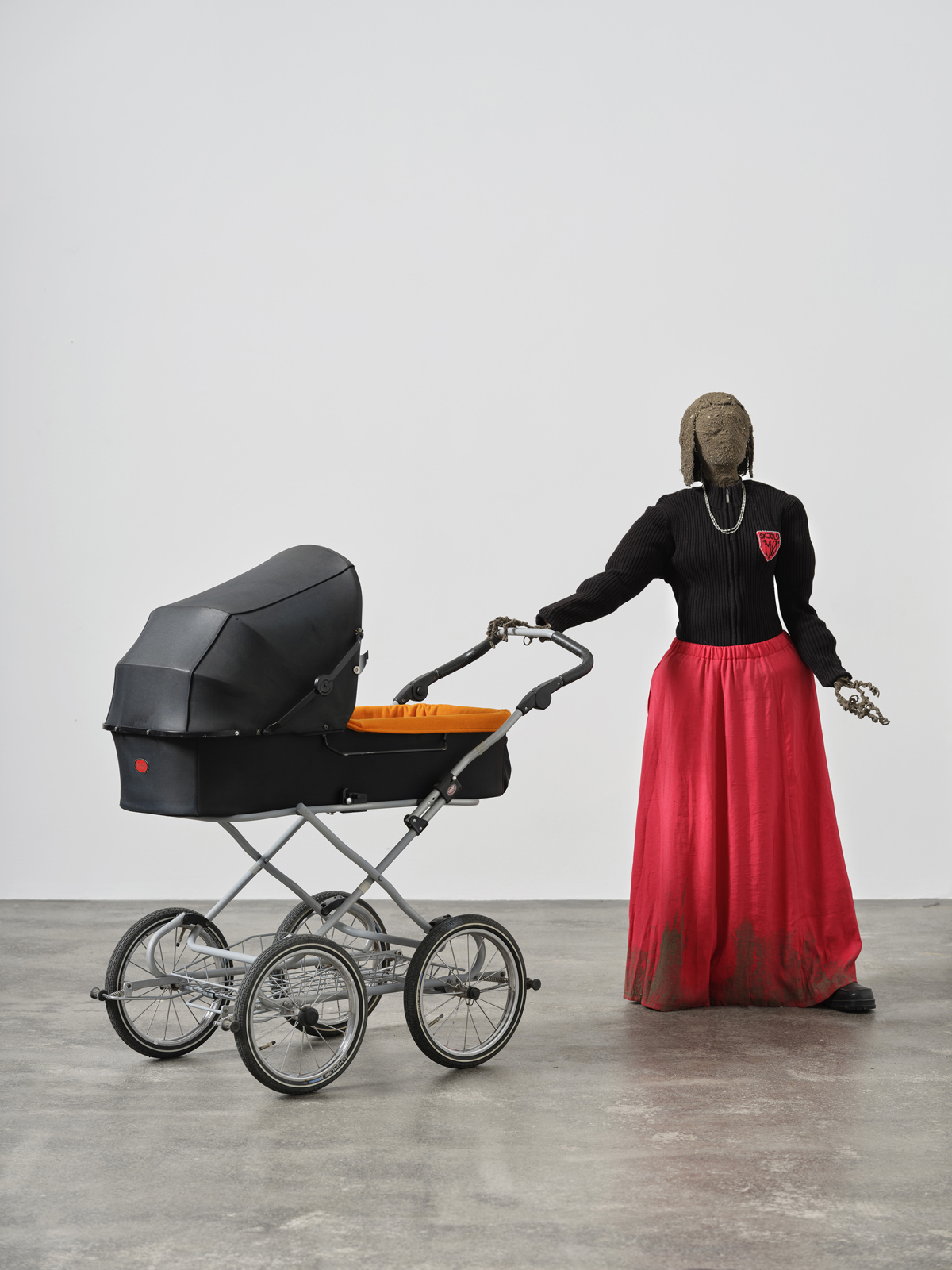
Gefion and Shield Cubs [Skjoldunger], 2021
Soil from Lejre, sweater with patch, skirt, boots, baby carriage, modded finger bikes, pillows, covers, plow toys, string, aluminium wire, upholstery foam, plastic, wood, hardware
162 x 211 x 83 cm
Gefion is gonna swipe some of Sweden’s soil, to make an entire island from scratch – with the help of her four oxen boys. But first, They need a nap tucked away under the pendulous plows in mamma’s Scandia carriage.
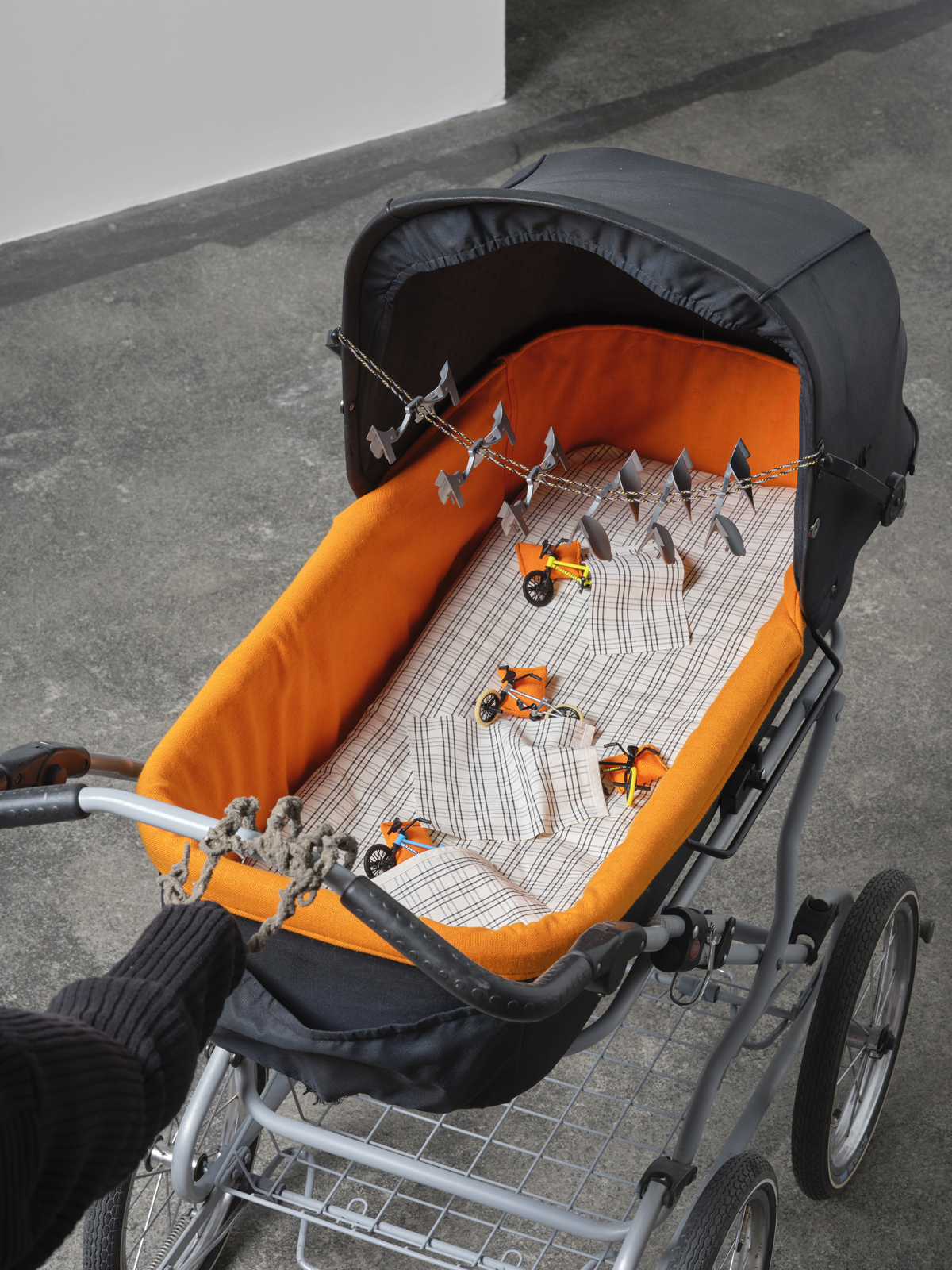
Gefion and Shield Cubs [Skjoldunger], 2021
Soil from Lejre, sweater with patch, skirt, boots, baby carriage, modded finger bikes, pillows, covers, plow toys, string, aluminium wire, upholstery foam, plastic, wood, hardware
162 x 211 x 83 cm
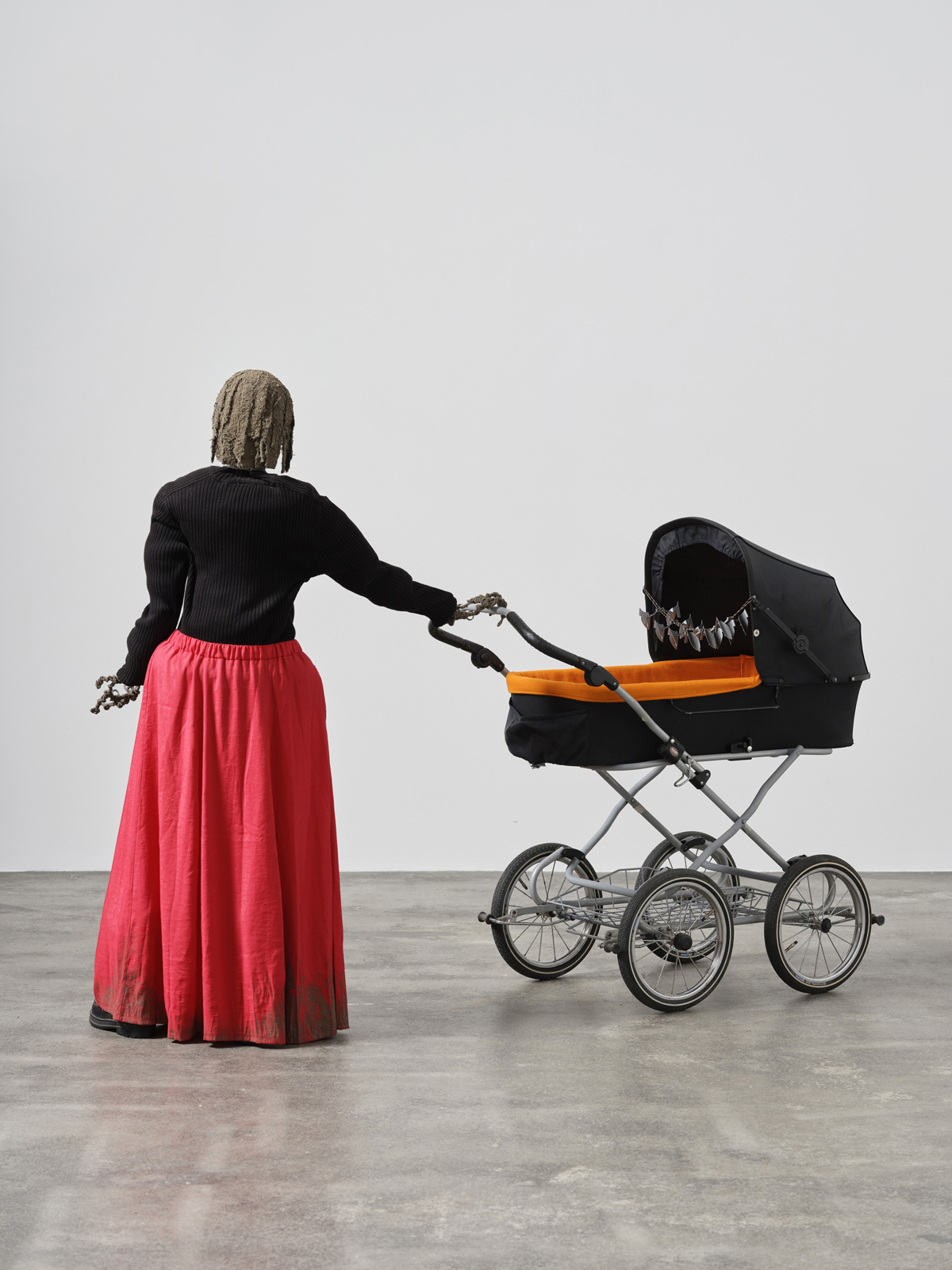
Gefion and Shield Cubs [Skjoldunger], 2021
Soil from Lejre, sweater with patch, skirt, boots, baby carriage, modded finger bikes, pillows, covers, plow toys, string, aluminium wire, upholstery foam, plastic, wood, hardware
162 x 211 x 83 cm
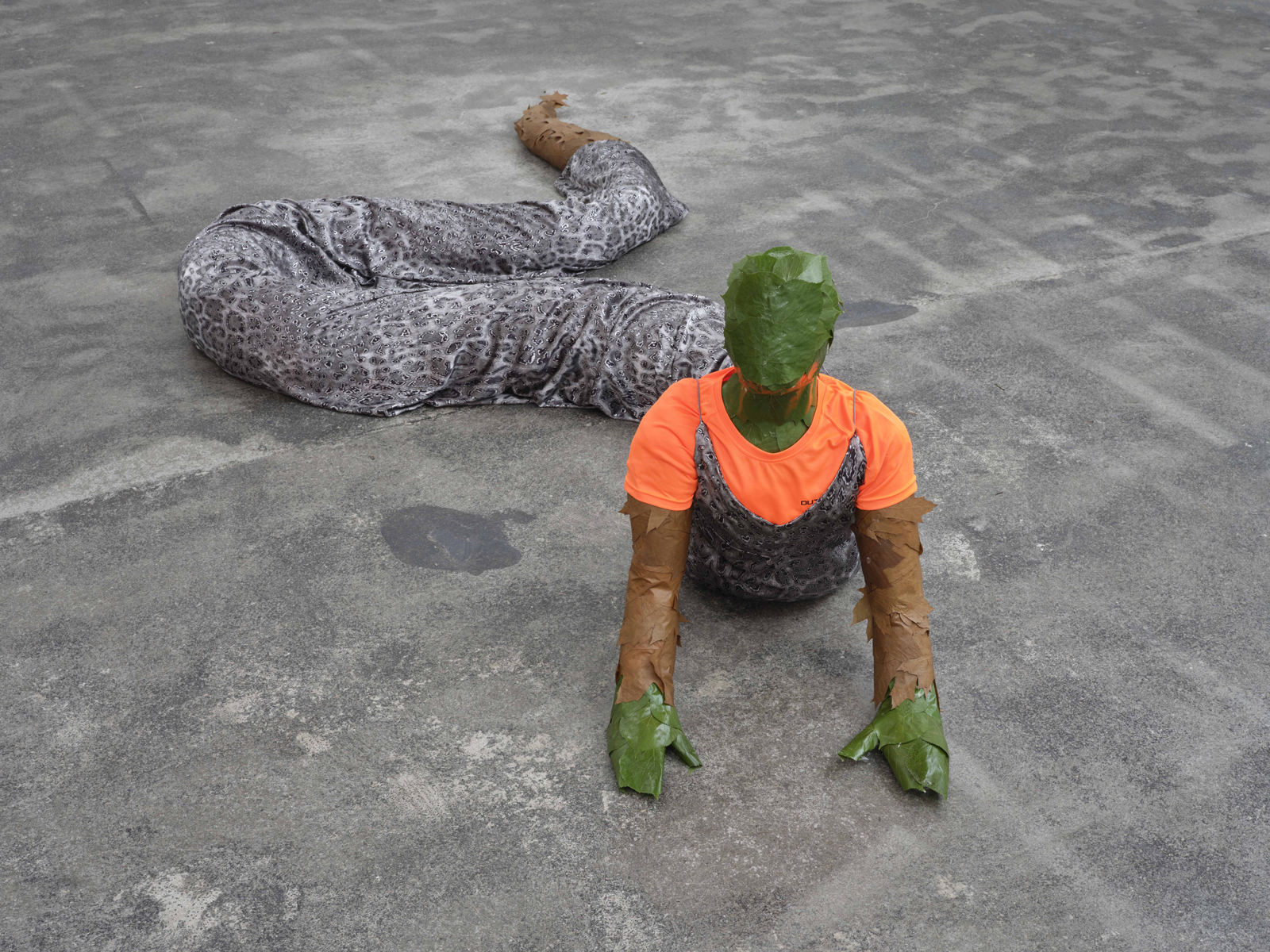
Lindworm [Lindorm], 2021
Coated linden leafs, coated fall leafs, silk dress, athletic shirt, upholstery foam, wood, plastic, hardware
74 x 130 x 210 cm
A snake? A dragon? They don’t adhere to your silly attempts at solid definitions! The Lindworm is living their best life, and no matter how many linden trees you plant, they could never incarcerate them more than normativity does. To them, as to Hamlet, Denmark is a prison.
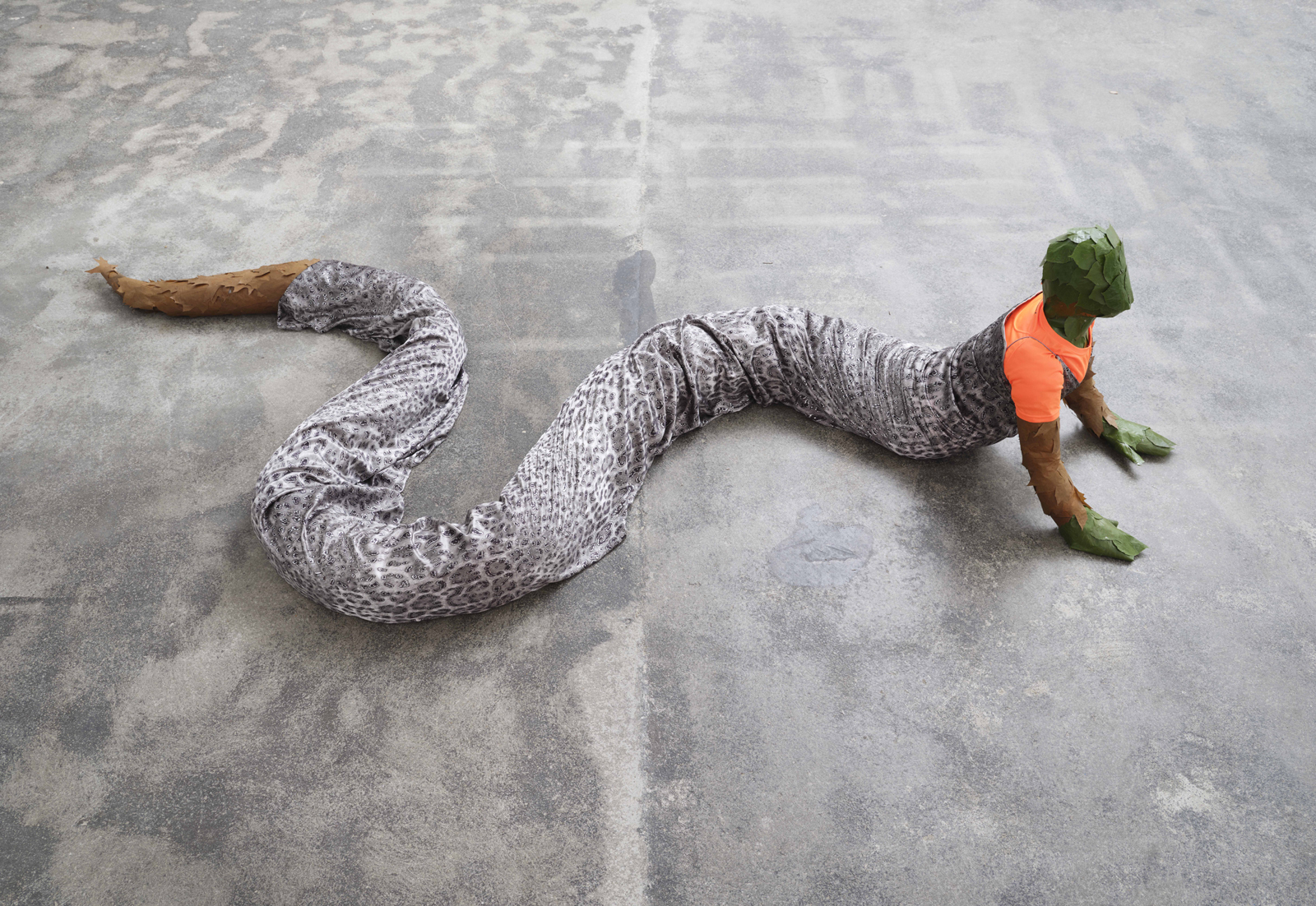
Lindworm [Lindorm], 2021
Coated linden leafs, coated fall leafs, silk dress, athletic shirt, upholstery foam, wood, plastic, hardware
74 x 130 x 210 cm
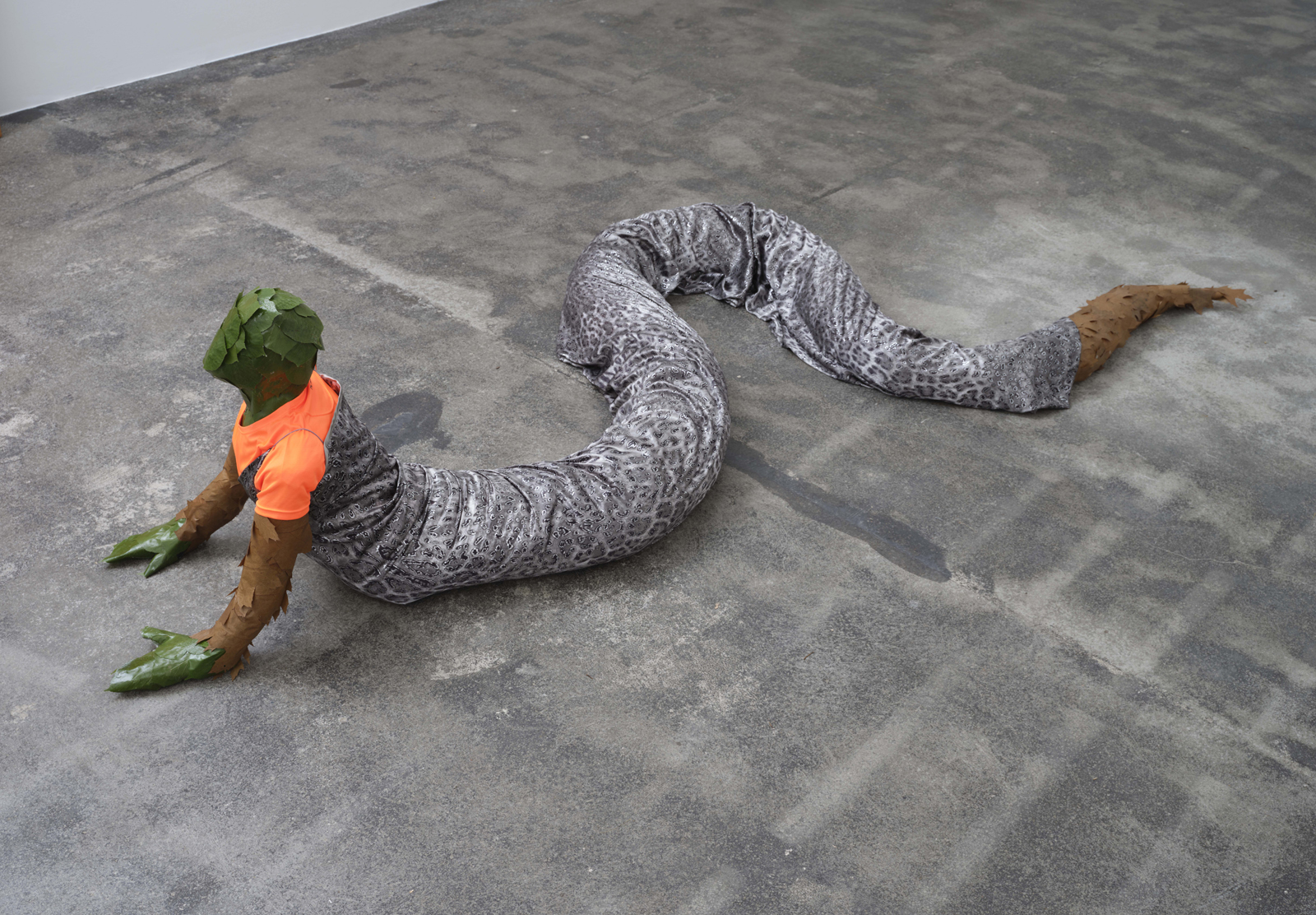
Lindworm [Lindorm], 2021
Coated linden leafs, coated fall leafs, silk dress, athletic shirt, upholstery foam, wood, plastic, hardware
74 x 130 x 210 cm
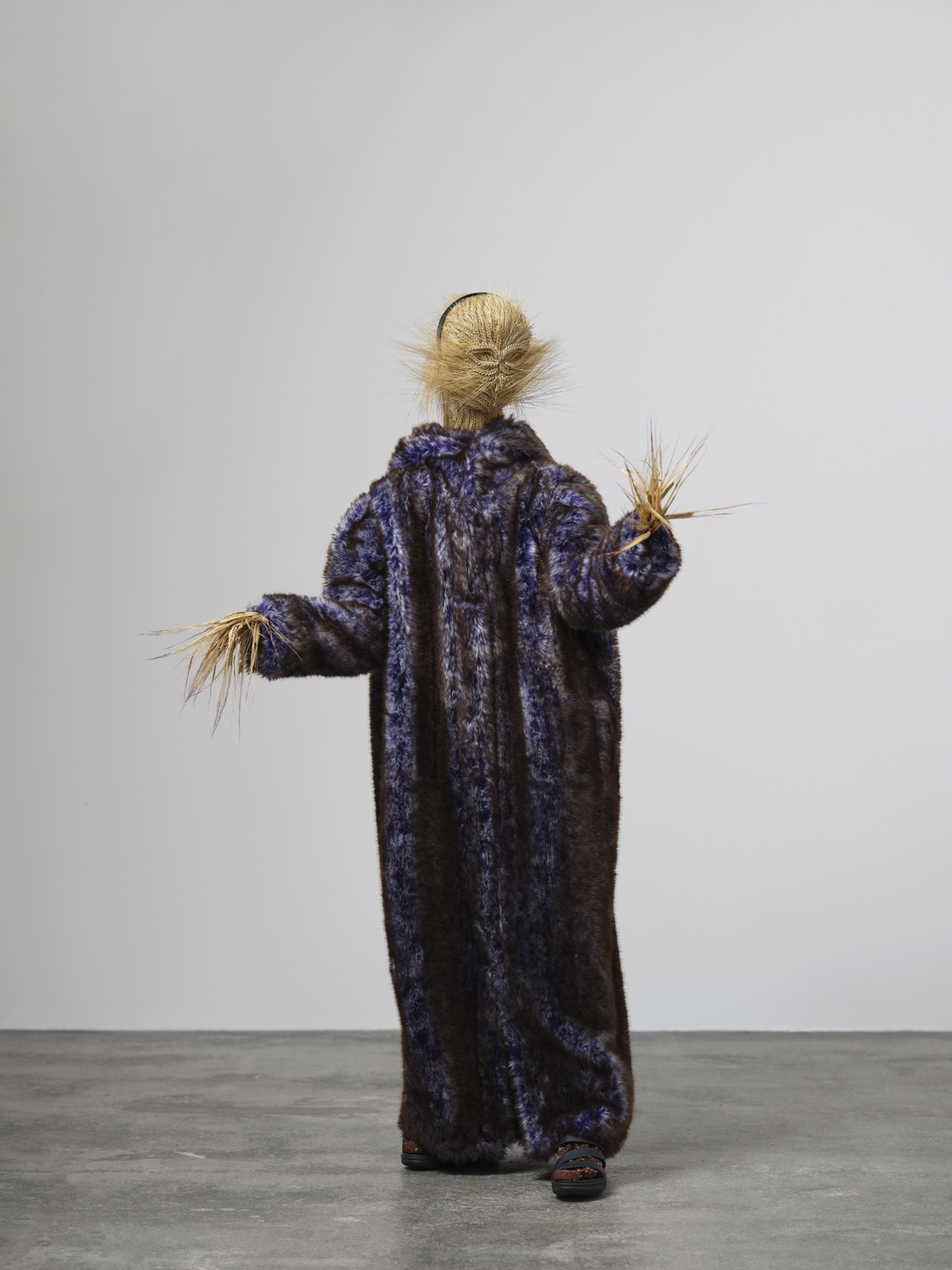
The Rye Bitch [Rugkællingen], 2021
Rye, rye bread, silk and mohair rope, imitated bear skin coat, nail polish, hairband, shoes, aluminium, wood, plastic, hardware
177 x 123 x 97 cm
The Rye Bitch is checking to see if she chipped one of her nails or kernels. She just got them done, too… She can seem a bit stand-offish at first, but wouldn’t you be guarded too if you had to flee from the slicing scythes every year?
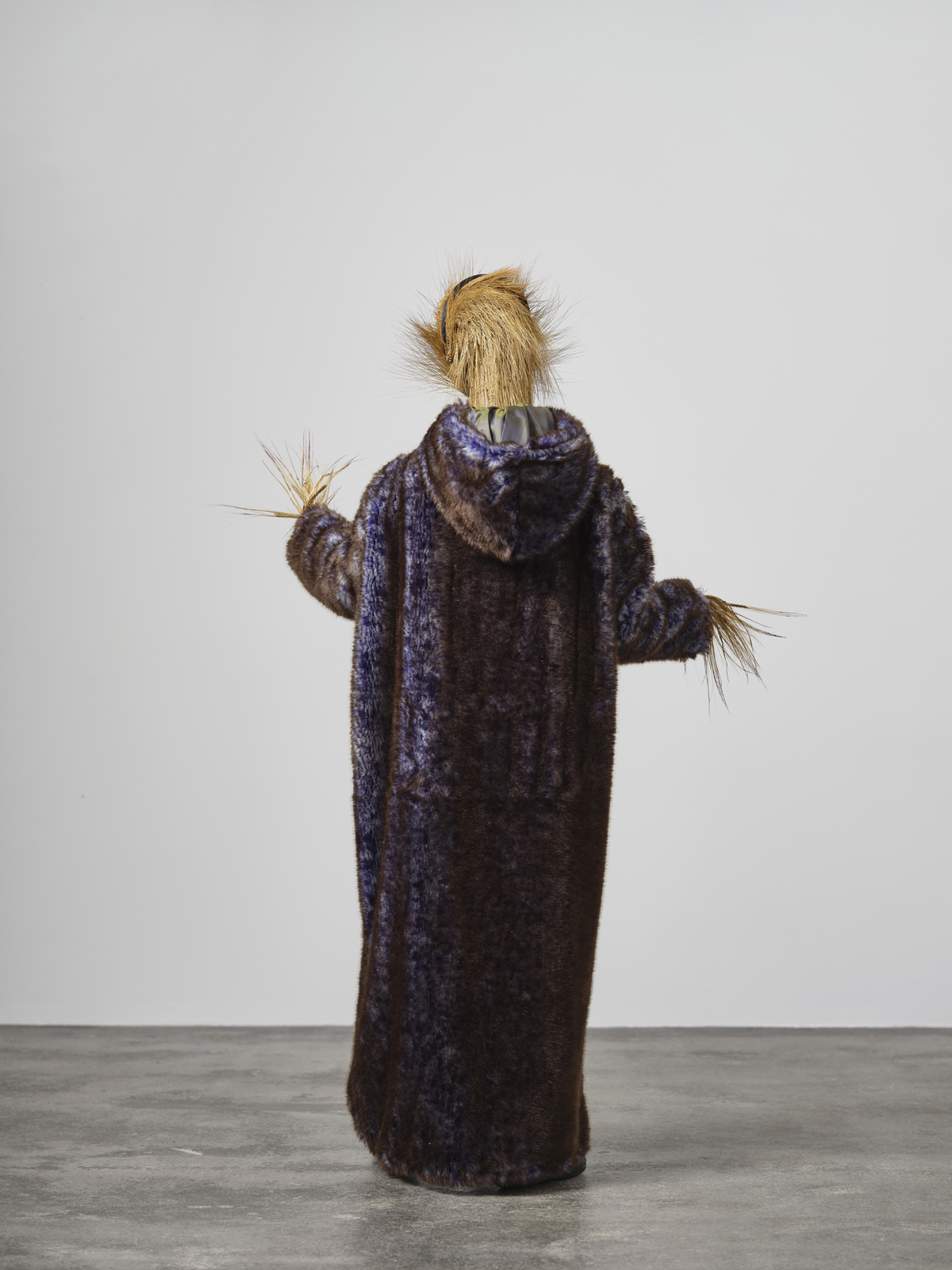
The Rye Bitch [Rugkællingen], 2021
Rye, rye bread, silk and mohair rope, imitated bear skin coat, nail polish, hairband, shoes, aluminium, wood, plastic, hardware
177 x 123 x 97 cm
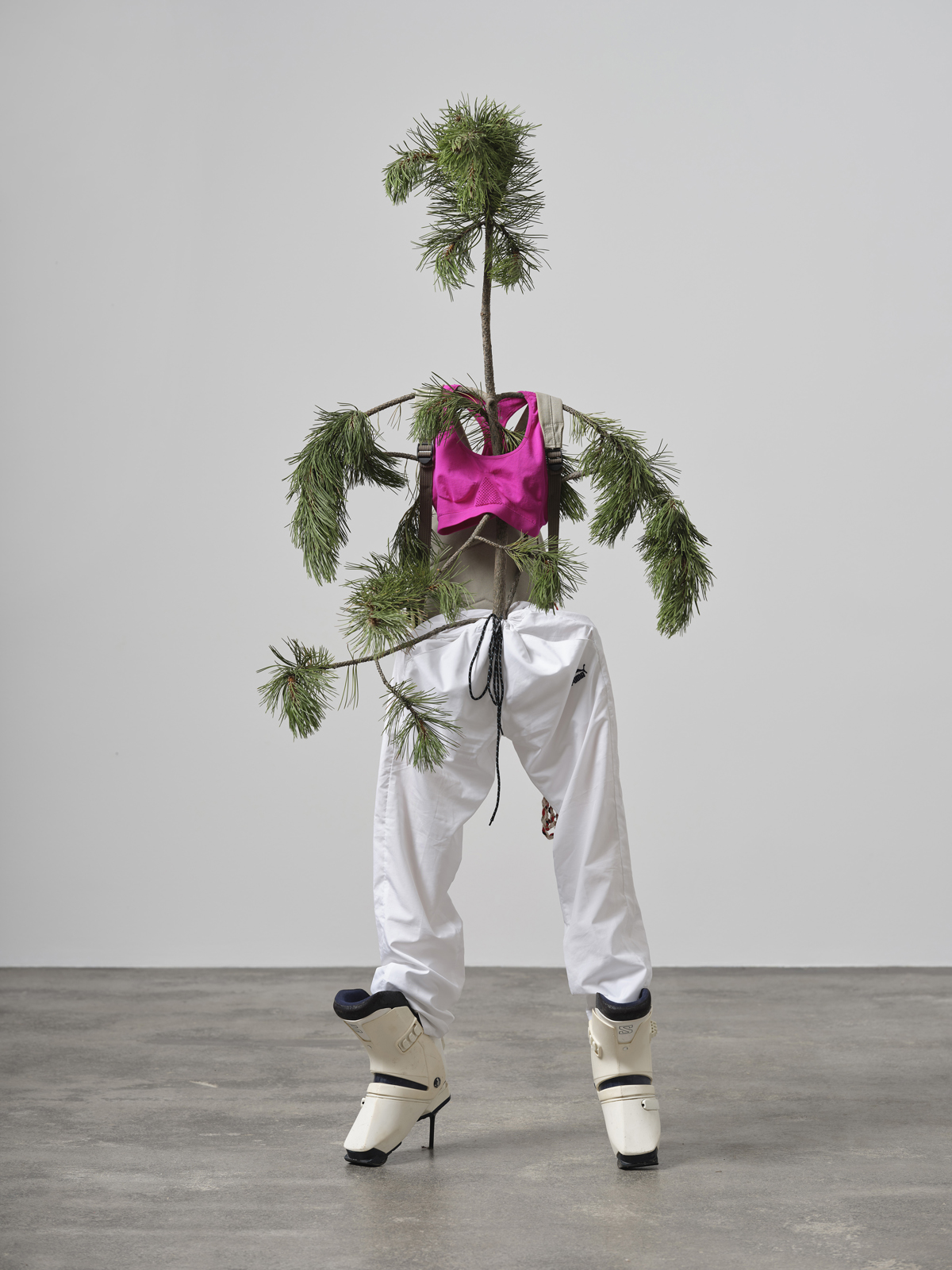
Skadi [Skade], 2021
Pine tree from Odsherred, spike heeled ski boot, jogging pants, sports brass, hairclip, backpack with patch, ropes and mountain dew bottle, wood, upholstery foam, hardware
198 x 89 x 78 cm
Skadi, the huntress turnt ski bum is the namesake of Scandinavia. Her life was permanently scarred when she was tricked into killing her father – but she found a slight bit of solace when she met her husband Njord. Even he can’t take the mountains out of the mountain girl, though...
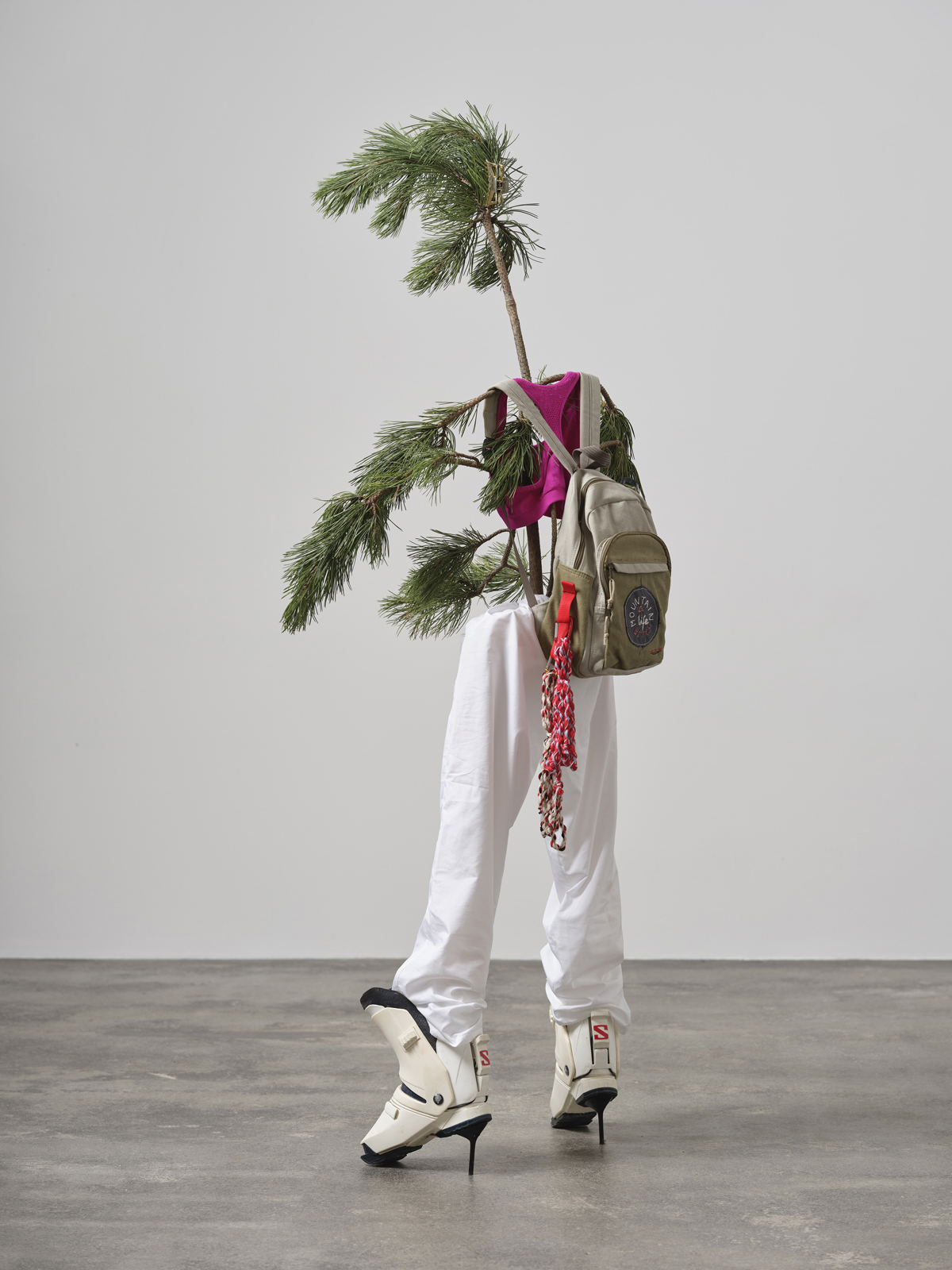
Skadi [Skade], 2021
Pine tree from Odsherred, spike heeled ski boot, jogging pants, sports brass, hairclip, backpack with patch, ropes and mountain dew bottle, wood, upholstery foam, hardware
198 x 89 x 78 cm
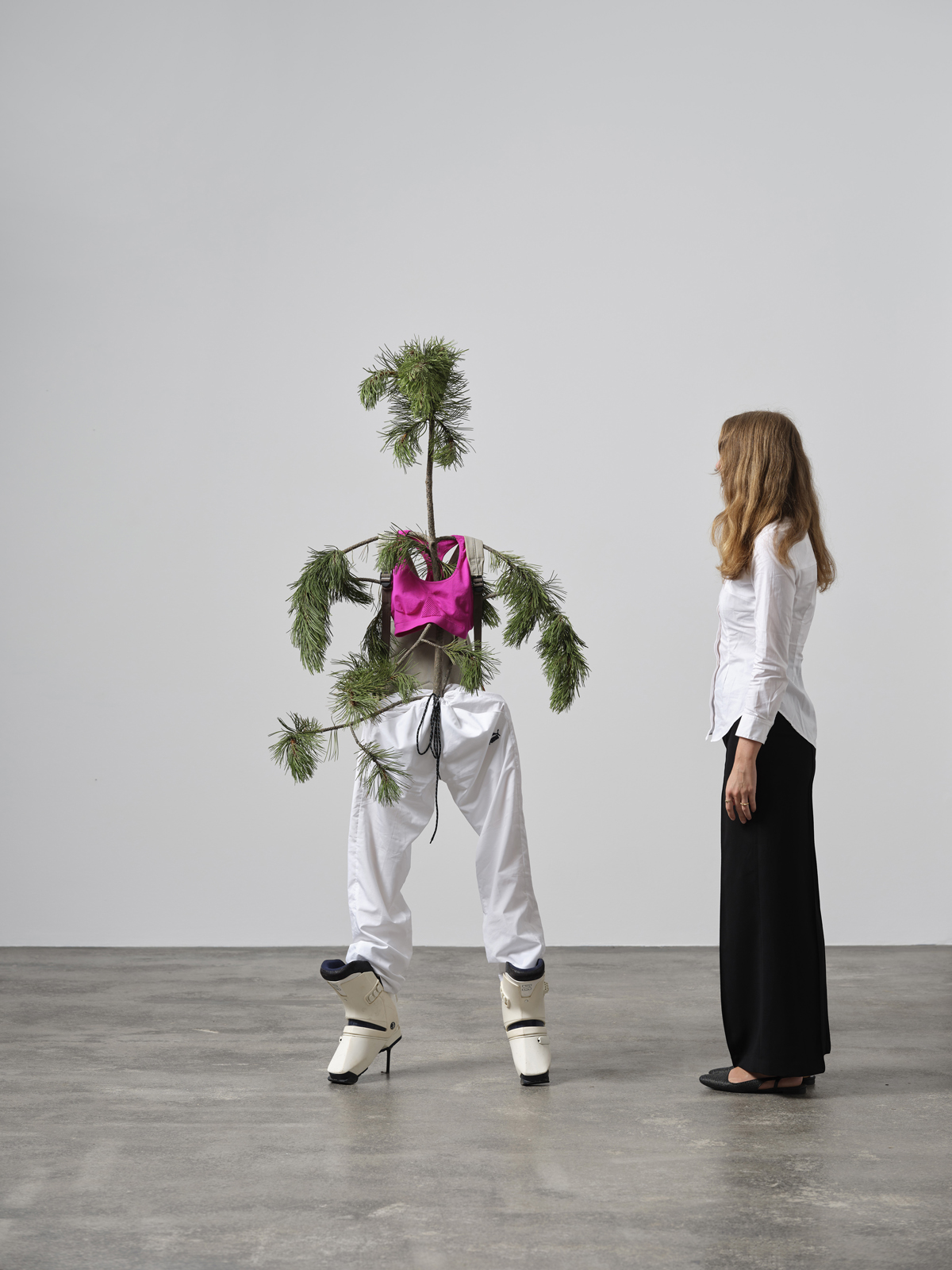
Skadi [Skade], 2021
Pine tree from Odsherred, spike heeled ski boot, jogging pants, sports brass, hairclip, backpack with patch, ropes and mountain dew bottle, wood, upholstery foam, hardware
198 x 89 x 78 cm
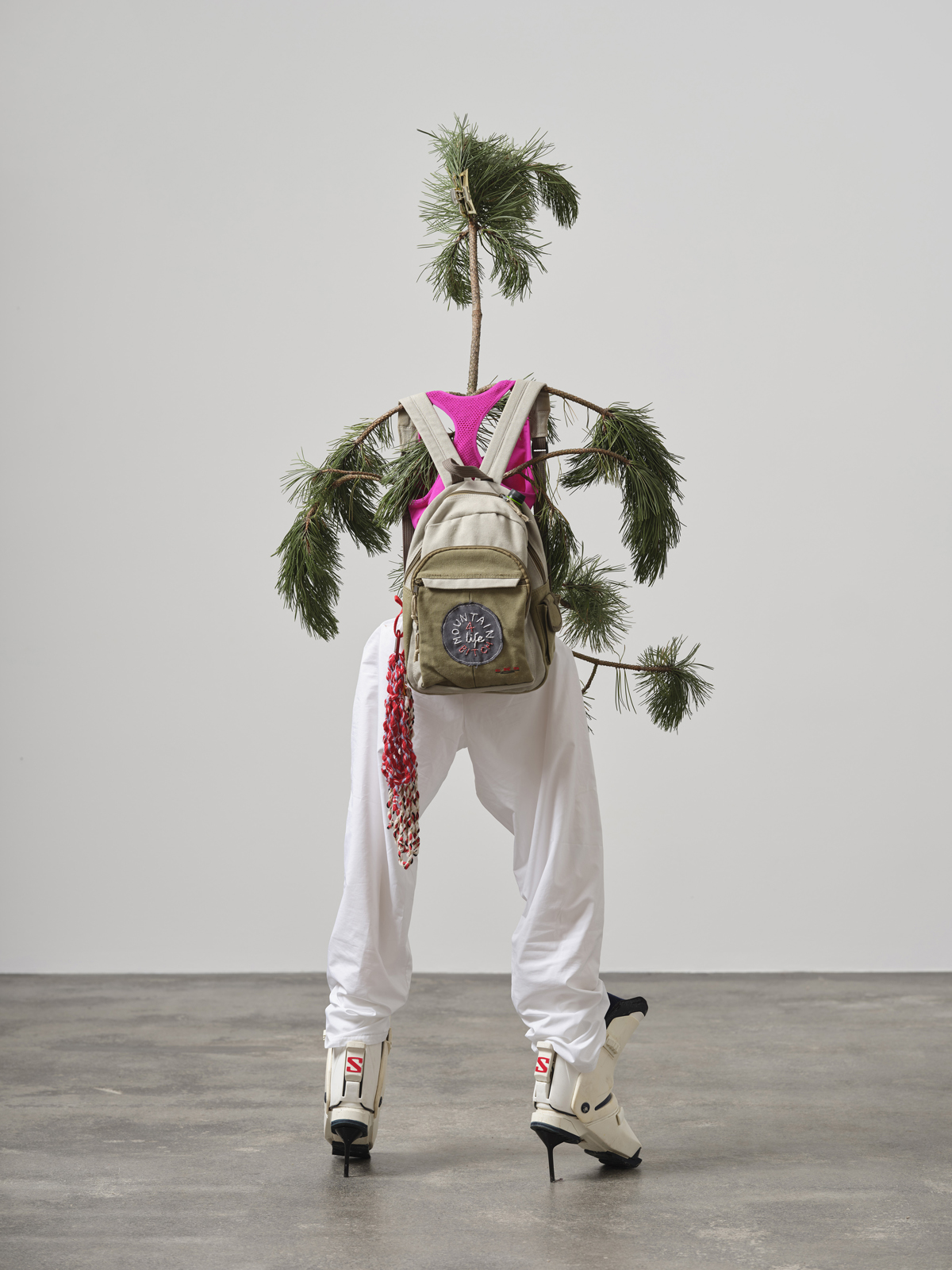
Skadi [Skade], 2021
Pine tree from Odsherred, spike heeled ski boot, jogging pants, sports brass, hairclip, backpack with patch, ropes and mountain dew bottle, wood, upholstery foam, hardware
198 x 89 x 78 cm
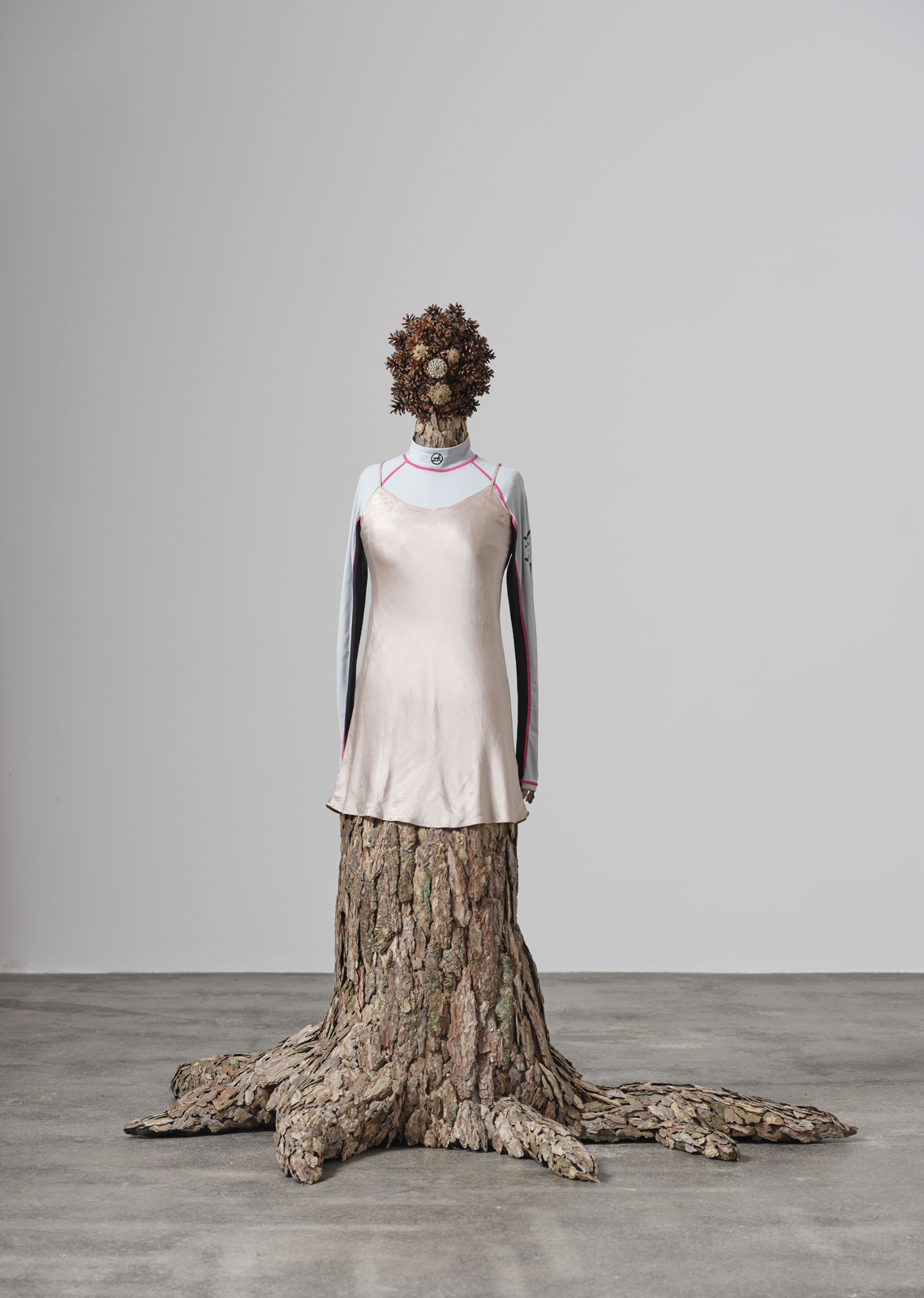
Gerd, 2021
Pine bark and pine cones from Odsherred, silk dress, athletic t-shirt, dress form, upholstery foam, wood, hardware
178 x 72 x 30 cm
Skadi’s daughter-in-law, Gerd, is all bark and no bite. Her unique giantess look is greatly appreciated by most, and got her on the cover of Vouge Asgard recently. Her marriage to Frey might have swayed the balance of the inevitable Ragnarok, but what is life without love…
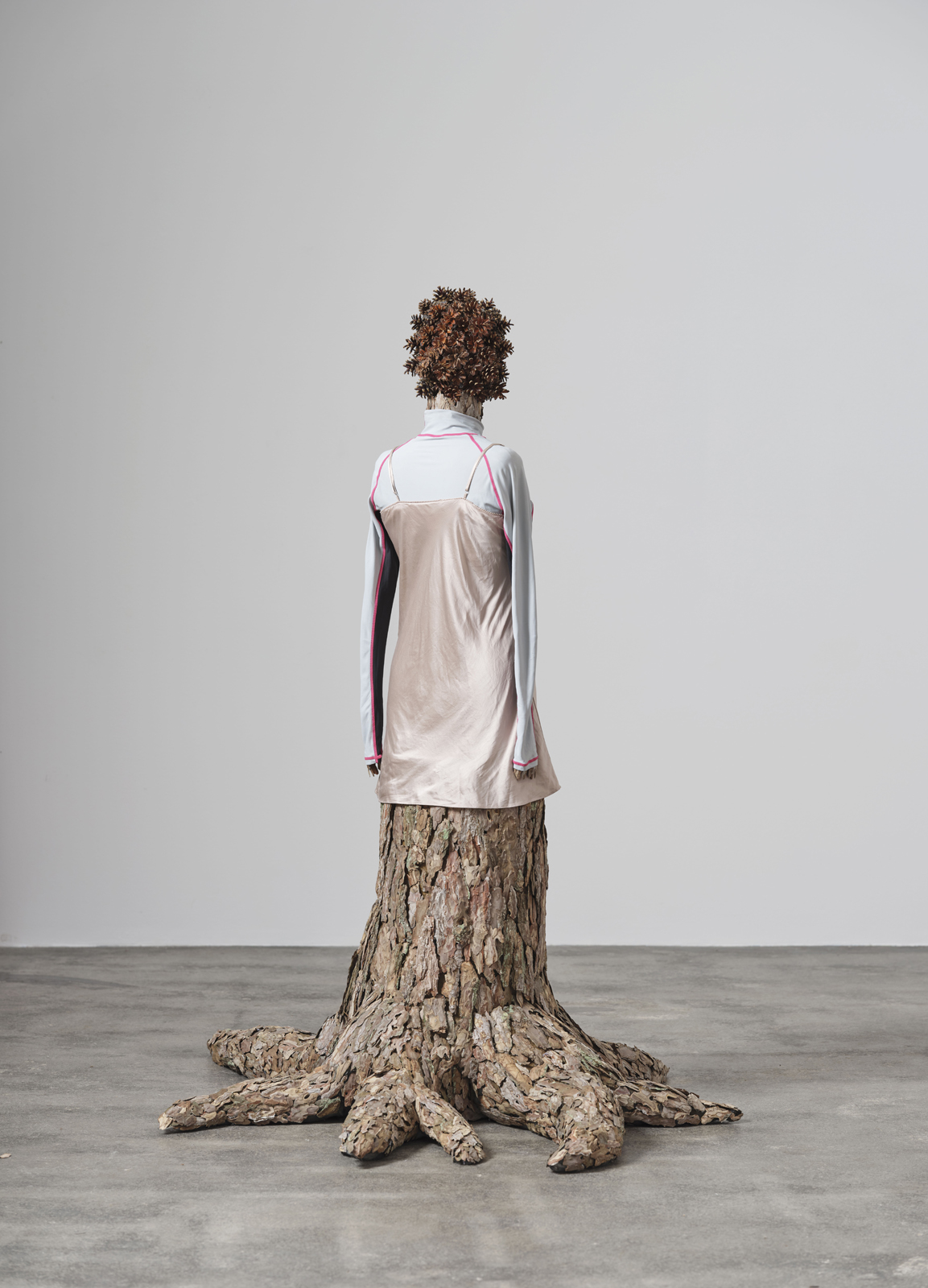
Gerd, 2021
Pine bark and pine cones from Odsherred, silk dress, athletic t-shirt, dress form, upholstery foam, wood, hardware
178 x 72 x 30 cm

Gerd, 2021
Pine bark and pine cones from Odsherred, silk dress, athletic t-shirt, dress form, upholstery foam, wood, hardware
178 x 72 x 30 cm

Beached Body [Strandvasker], 2021
Driftwood, windswept oak from Gudhjem (DK), hardware, underwear
137 x 33 x 53 cm
The Beached Body is a good guy, really – once you get that his restless energy is more about him than it is about you… An eternally restless spirit, self-exhumed from his grave on the sandy shore his body washed up on.
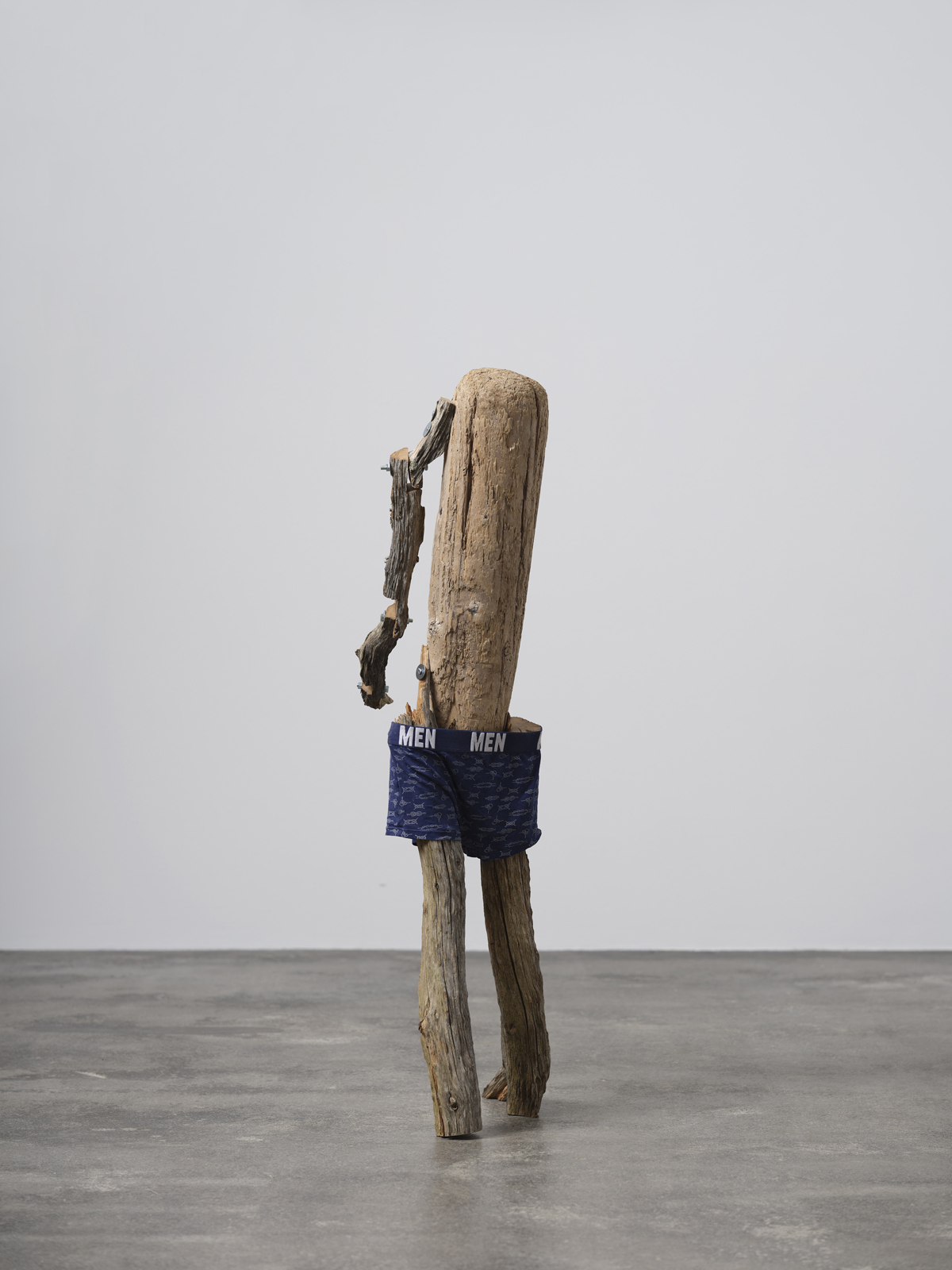
Beached Body [Strandvasker], 2021
Driftwood, windswept oak from Gudhjem (DK), hardware, underwear
137 x 33 x 53 cm
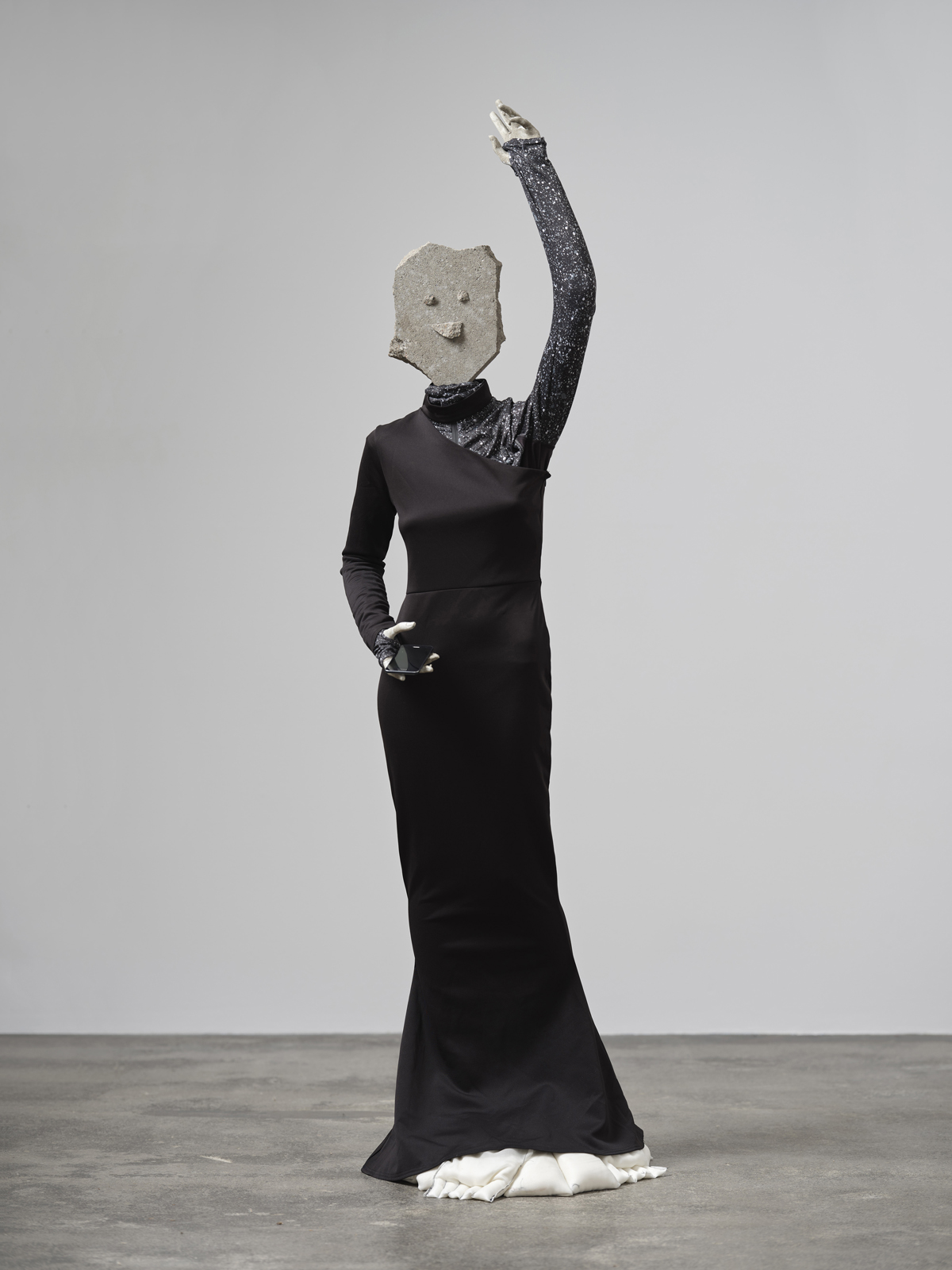
The Dyke [Betonlebben], 2021
Concrete, silk sand bags, sand, mannequin, phone, dress, t-shirt, ring
210 x 54 x 62 cm
You couldn’t wish for a more stable, solid and dependable friend than the Dyke. Whether she is poured concrete or supple sandbags, she’s steadfast and fierce as she protects her community. We do however sometimes forget that the sturdy protectors need support too...
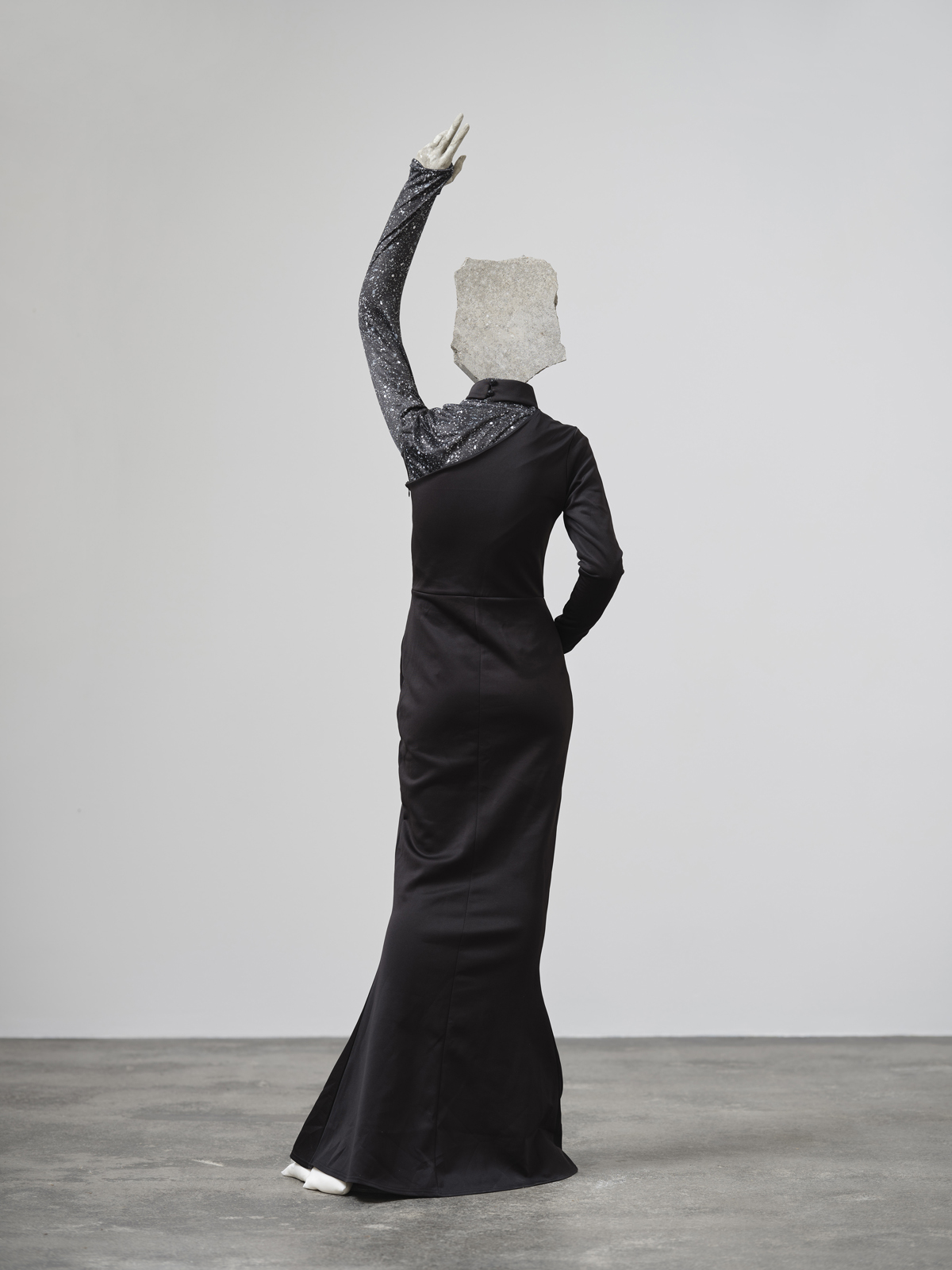
The Dyke [Betonlebben], 2021
Concrete, silk sand bags, sand, mannequin, phone, dress, t-shirt, ring
210 x 54 x 62 cm